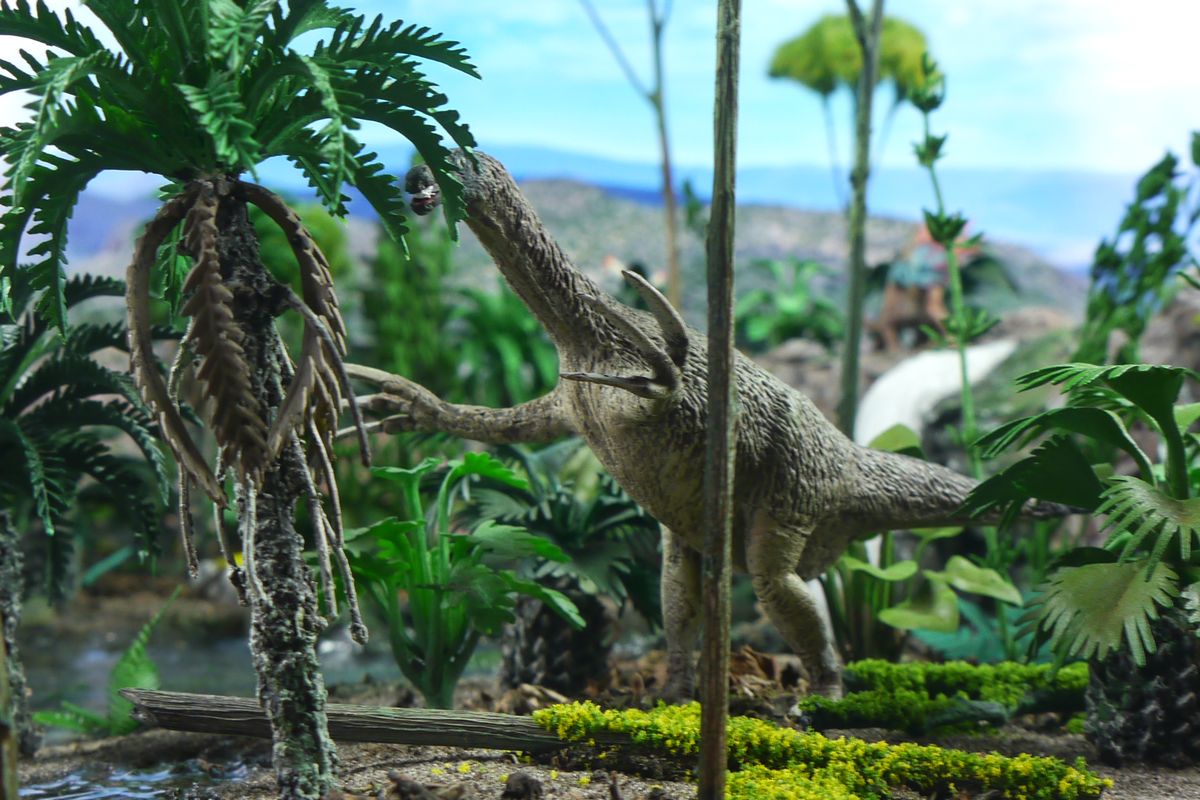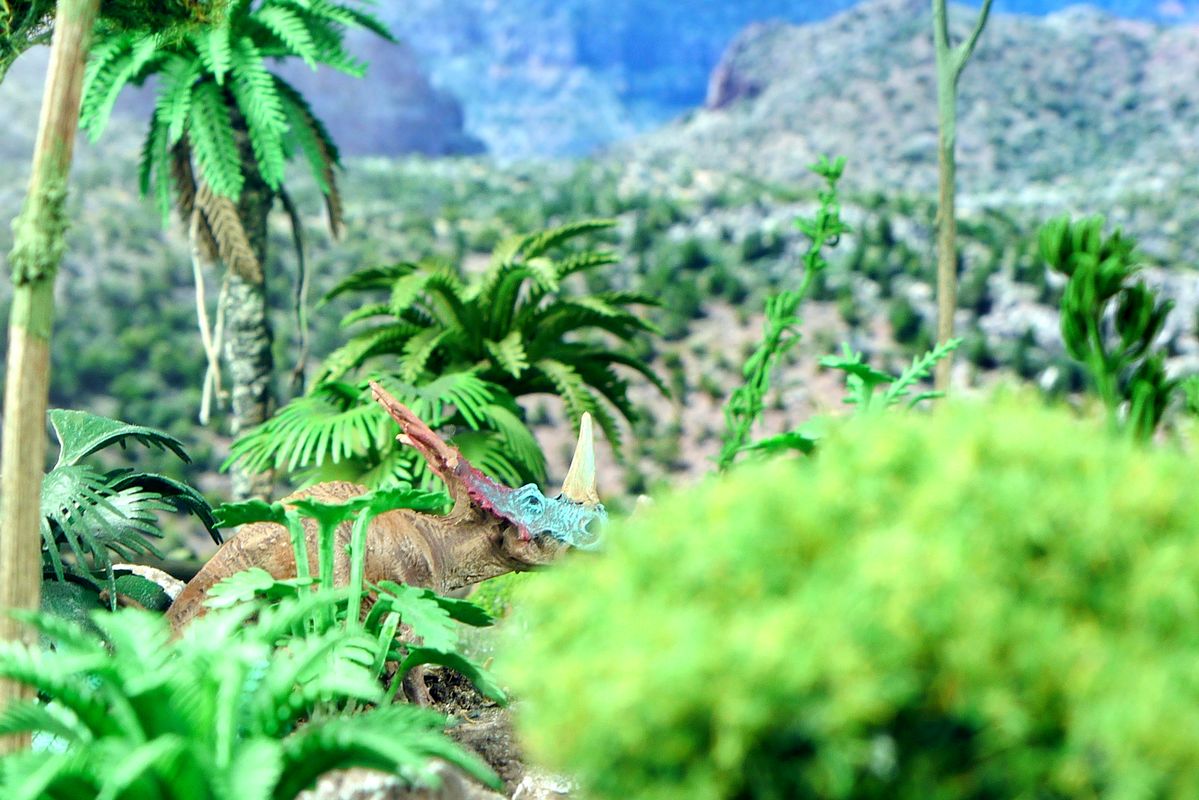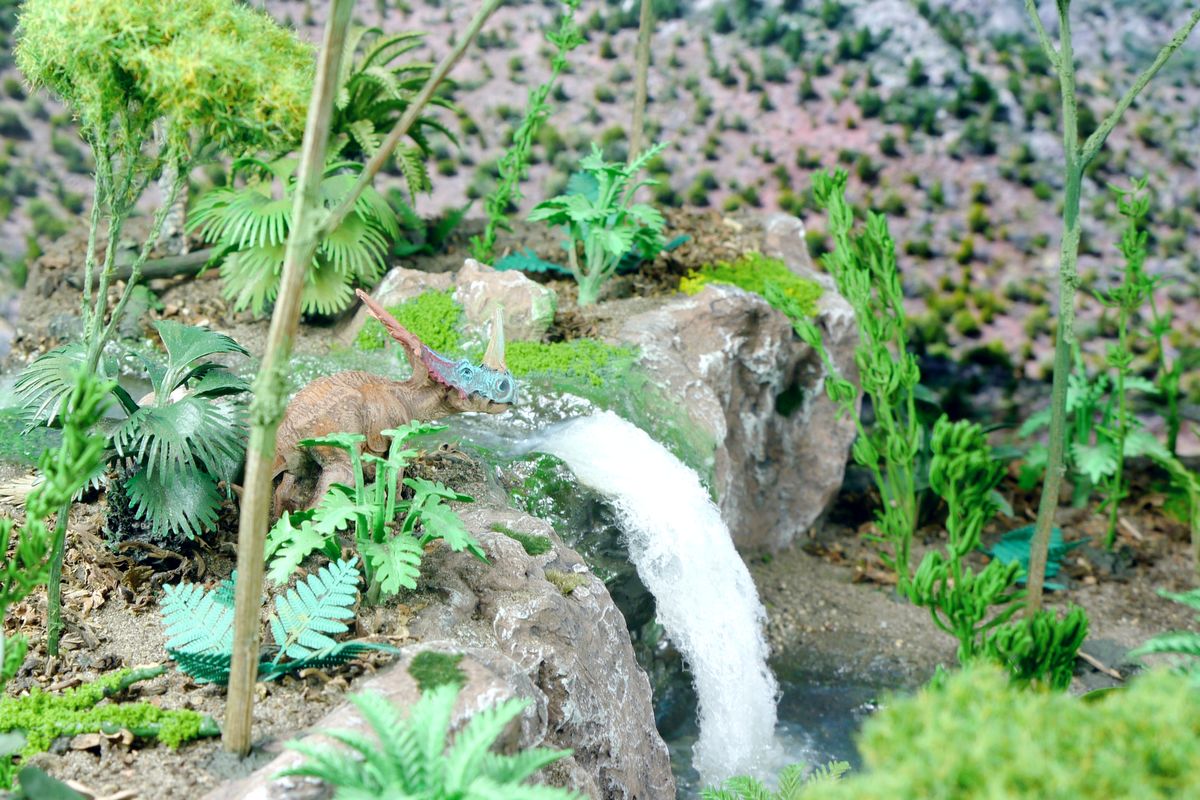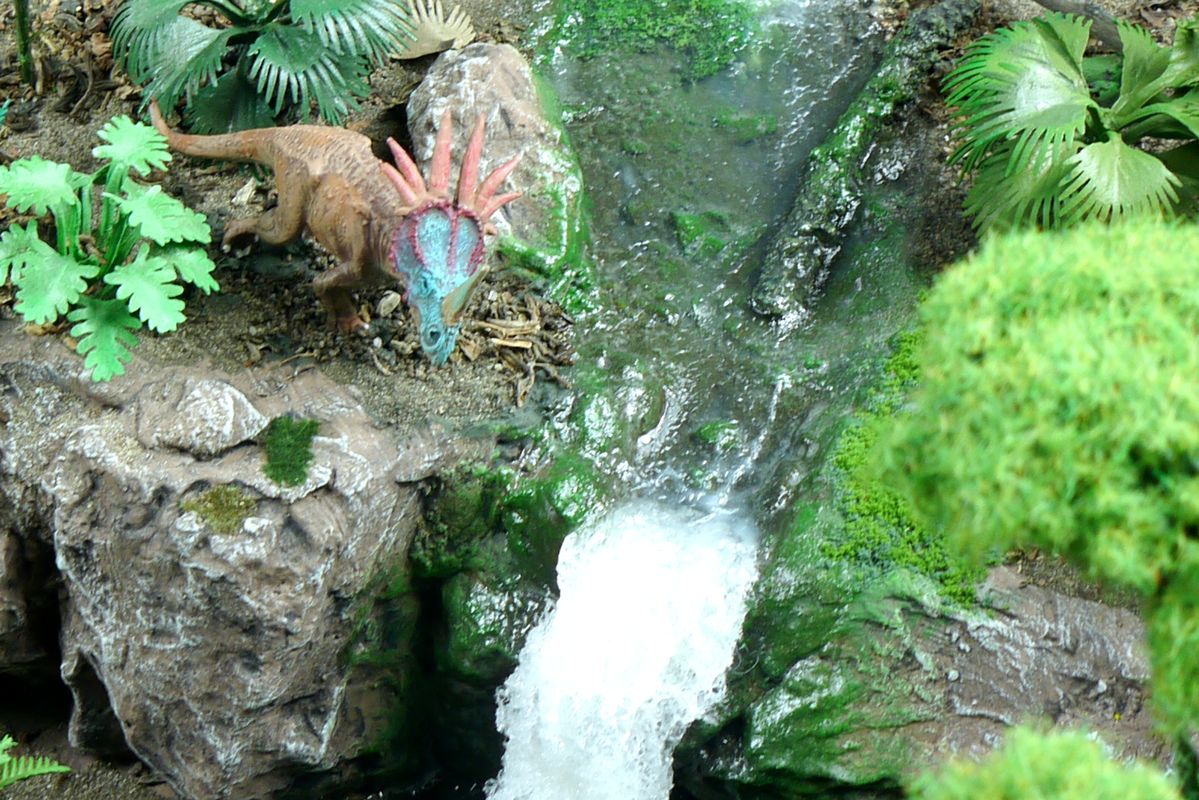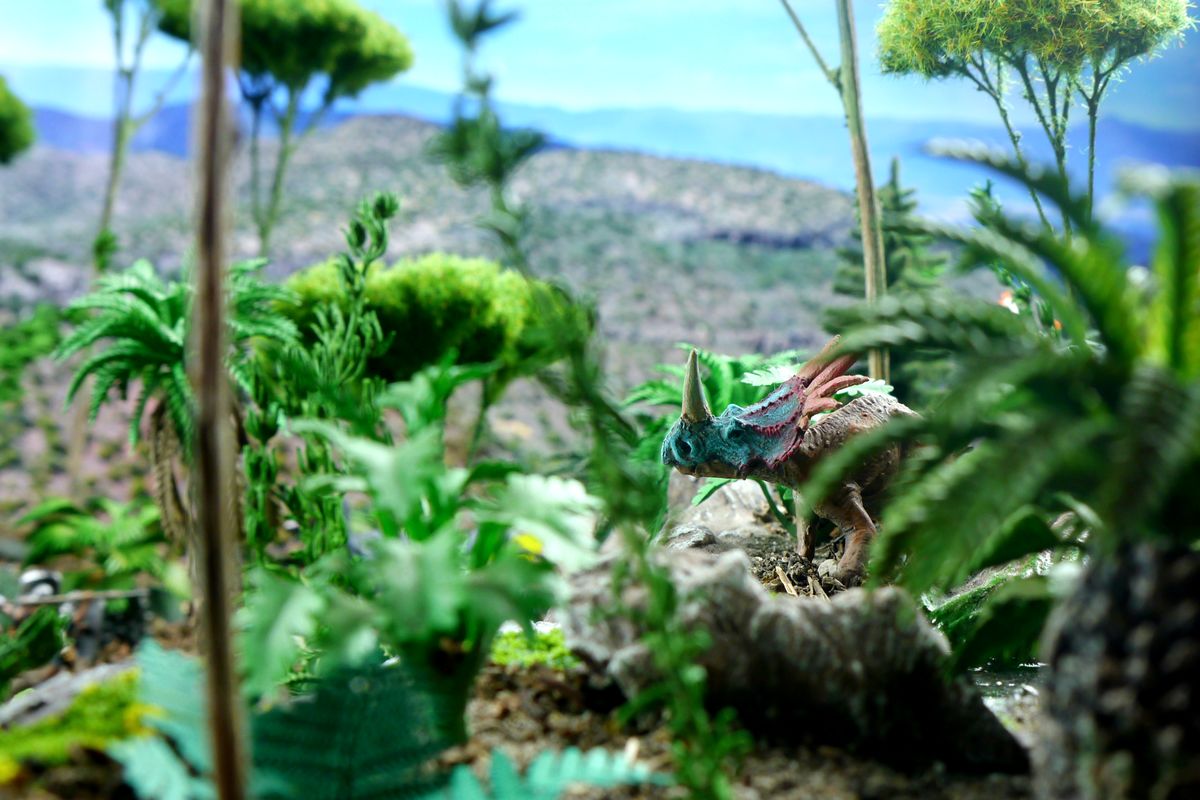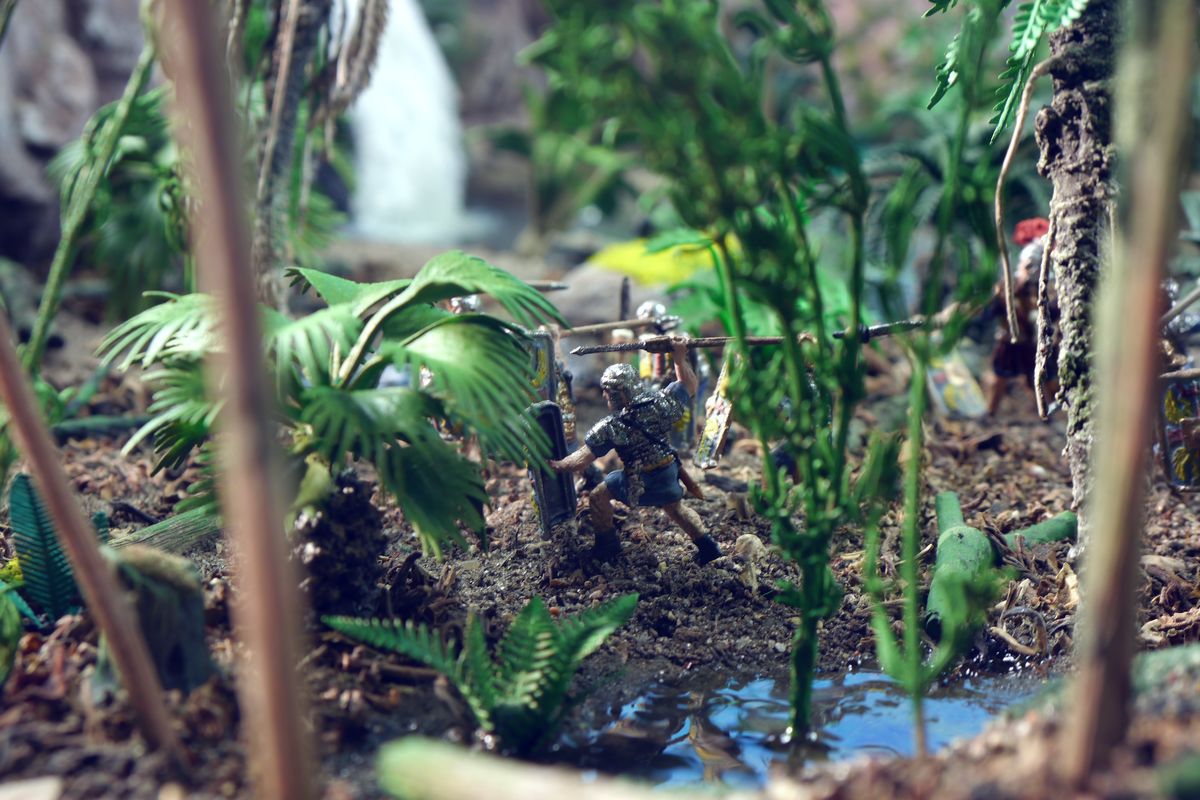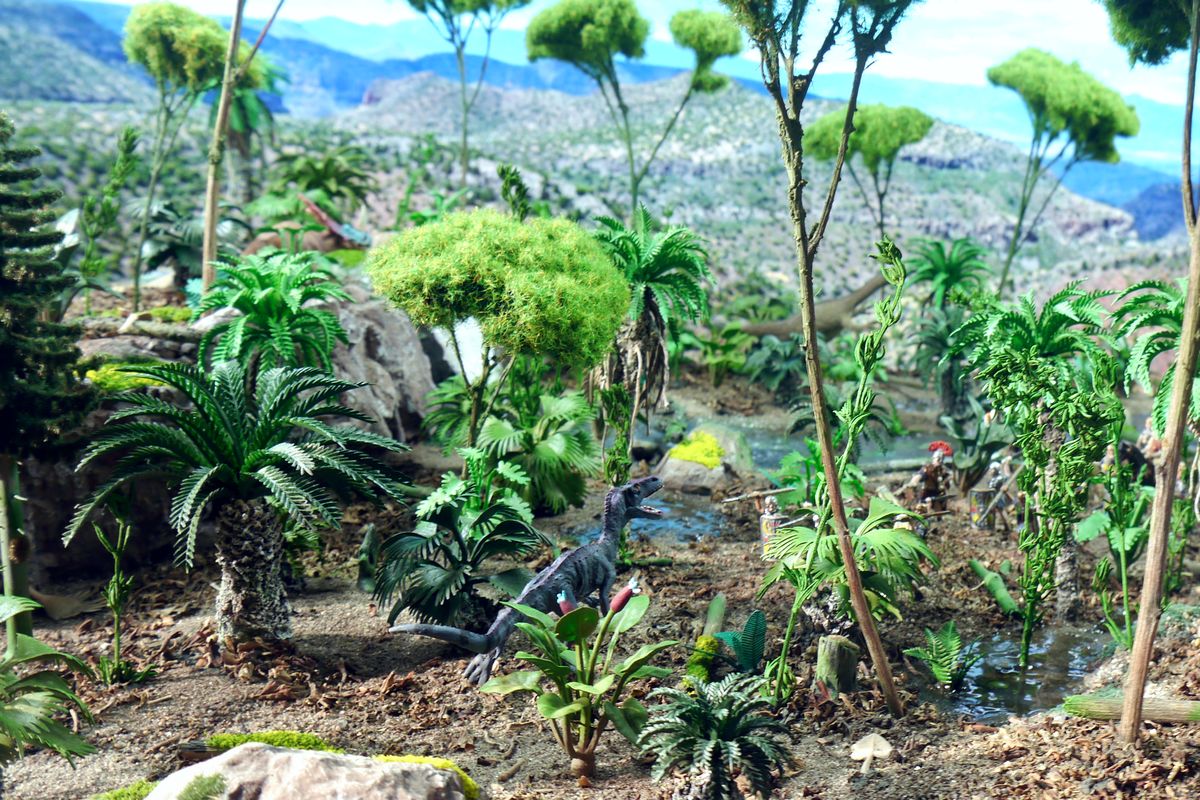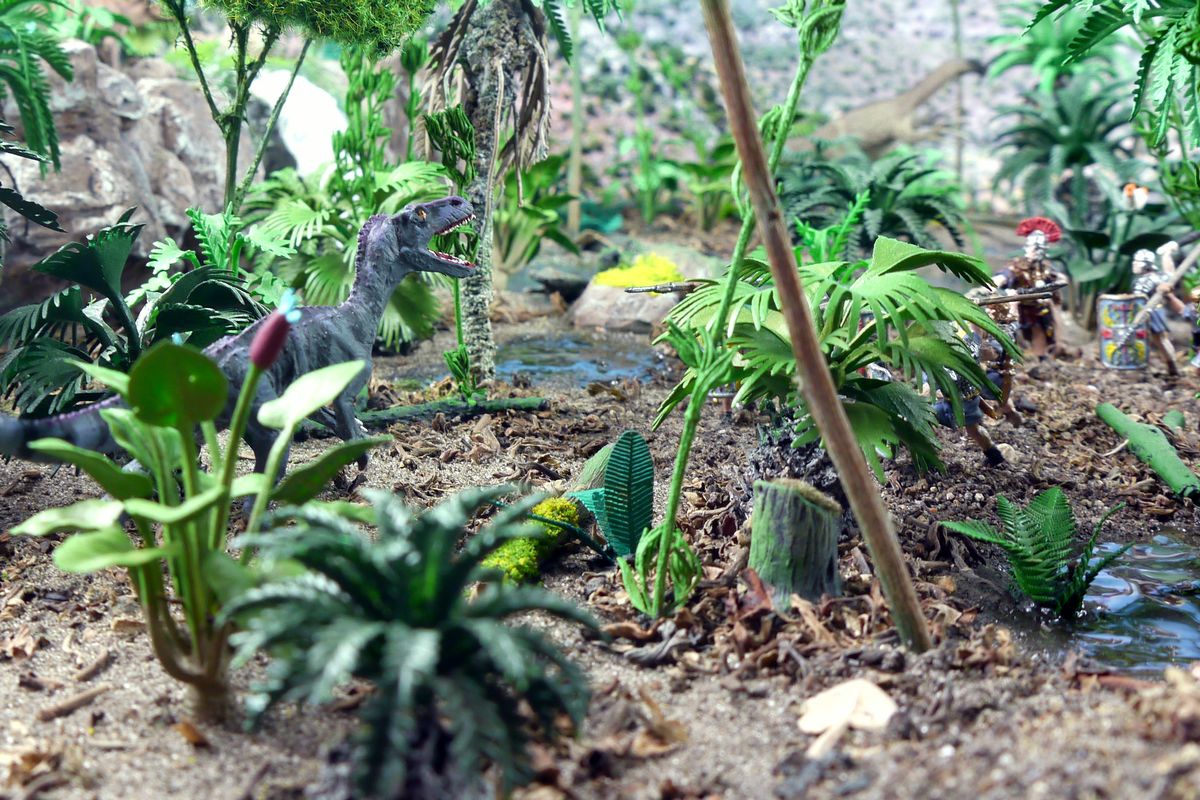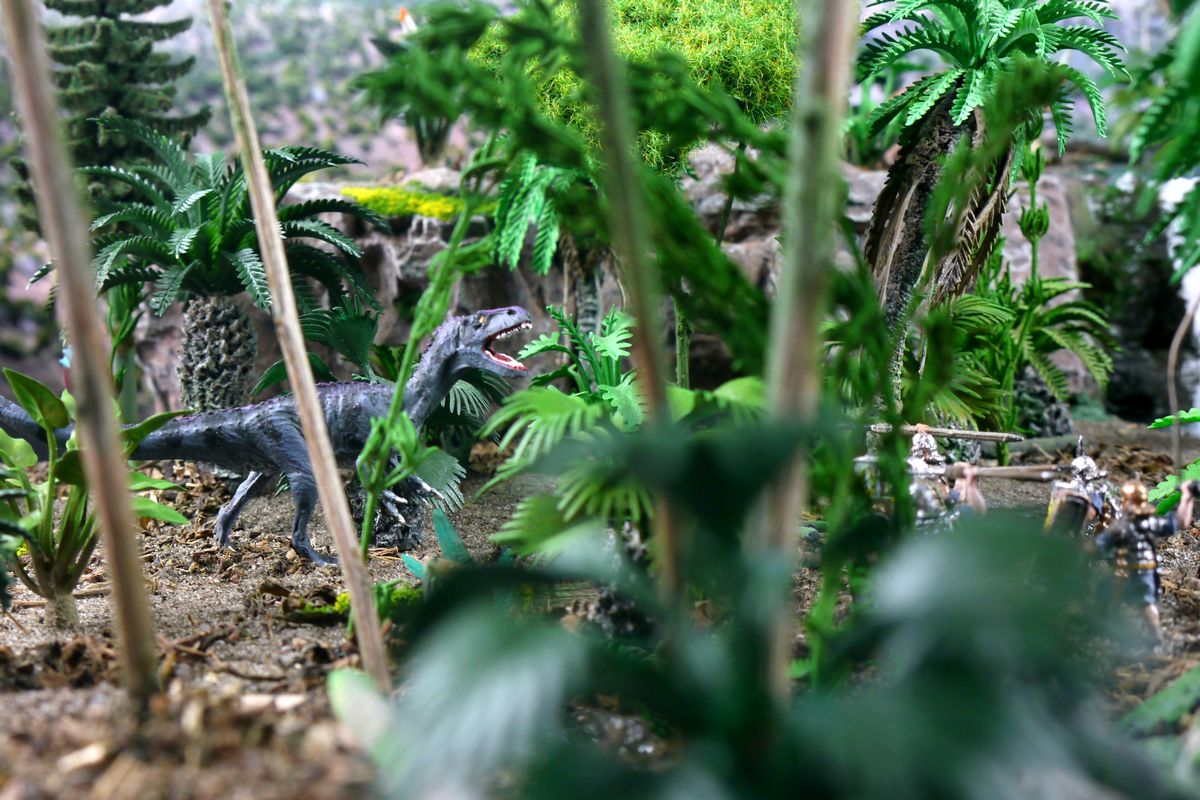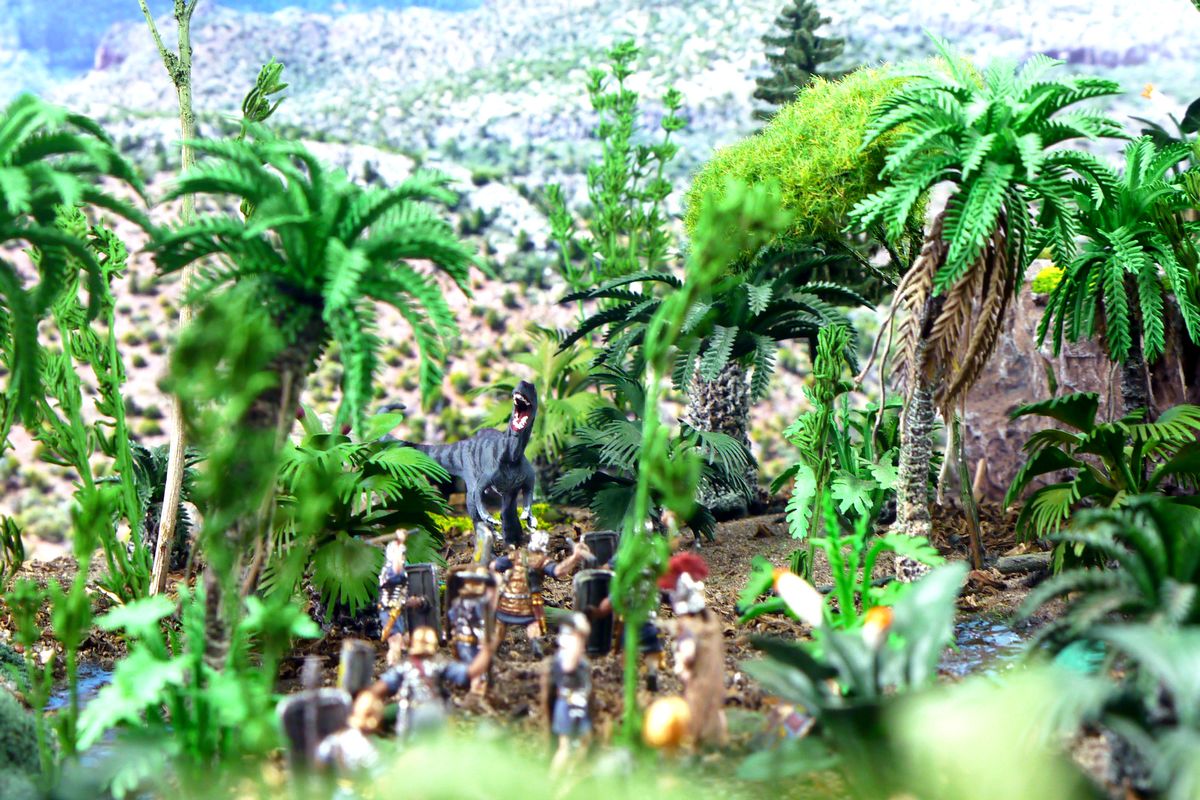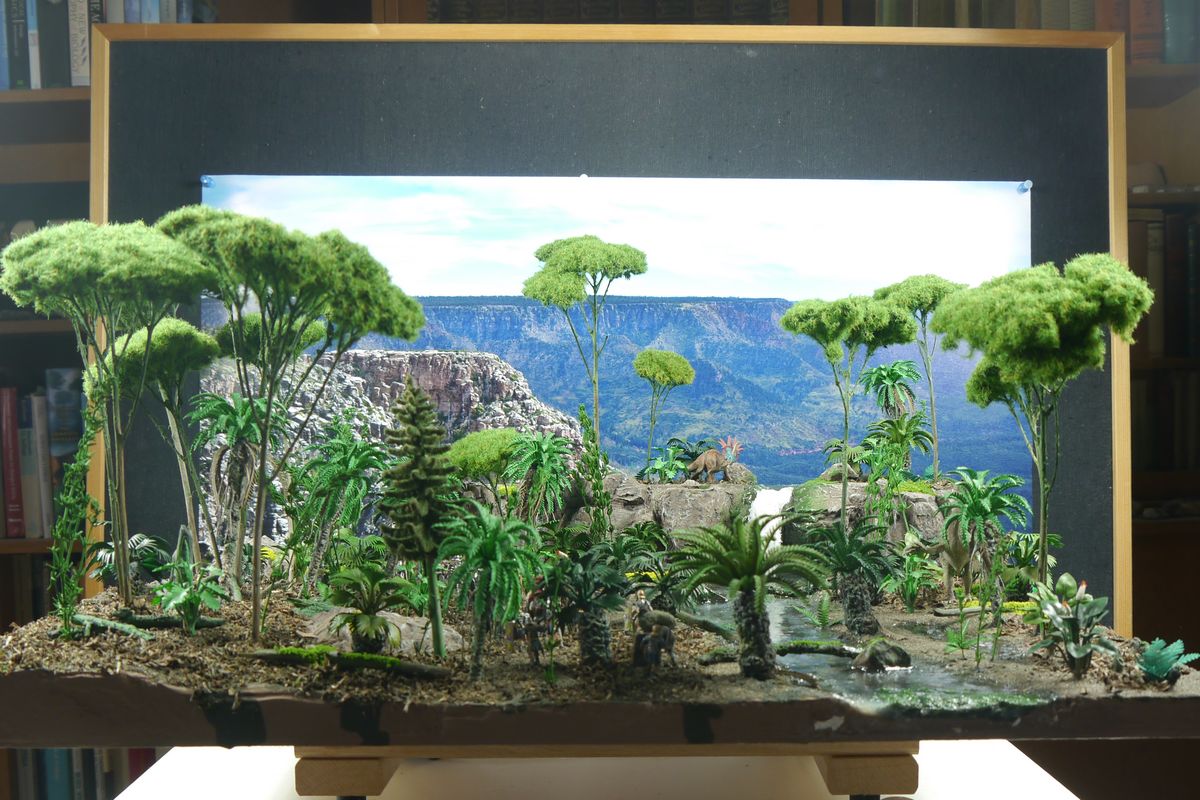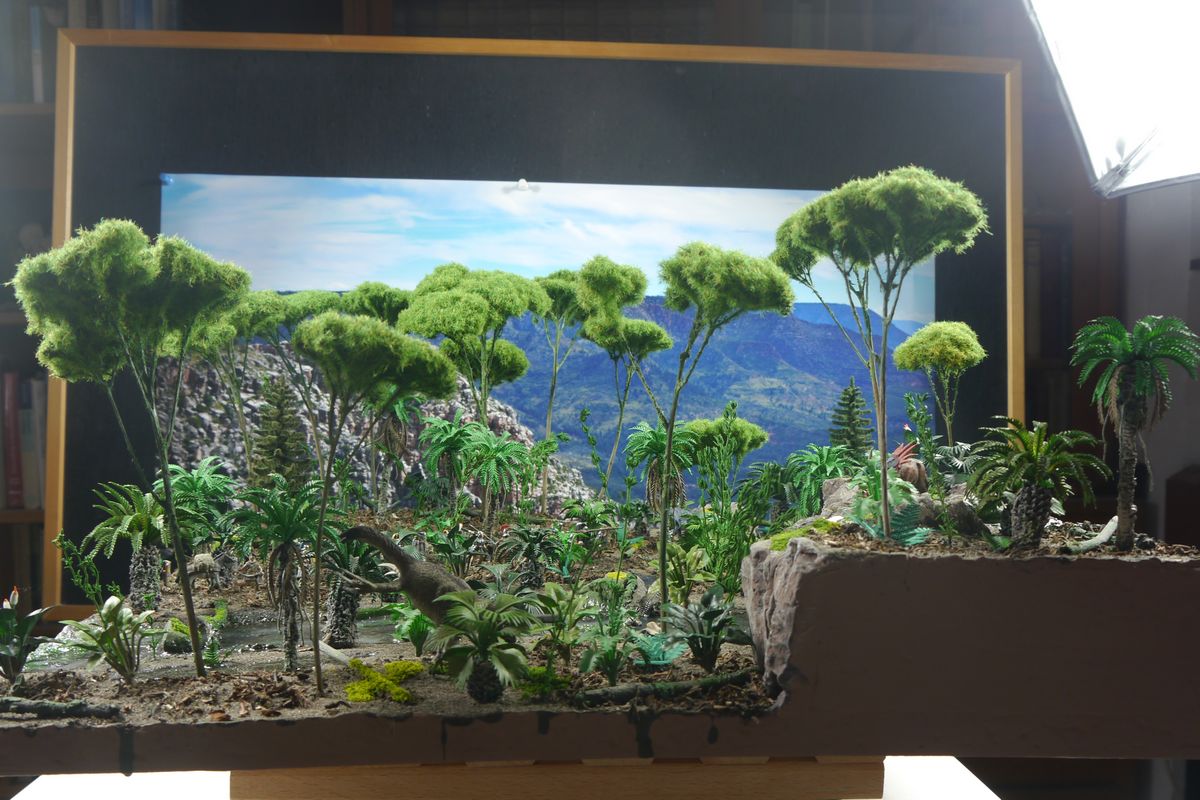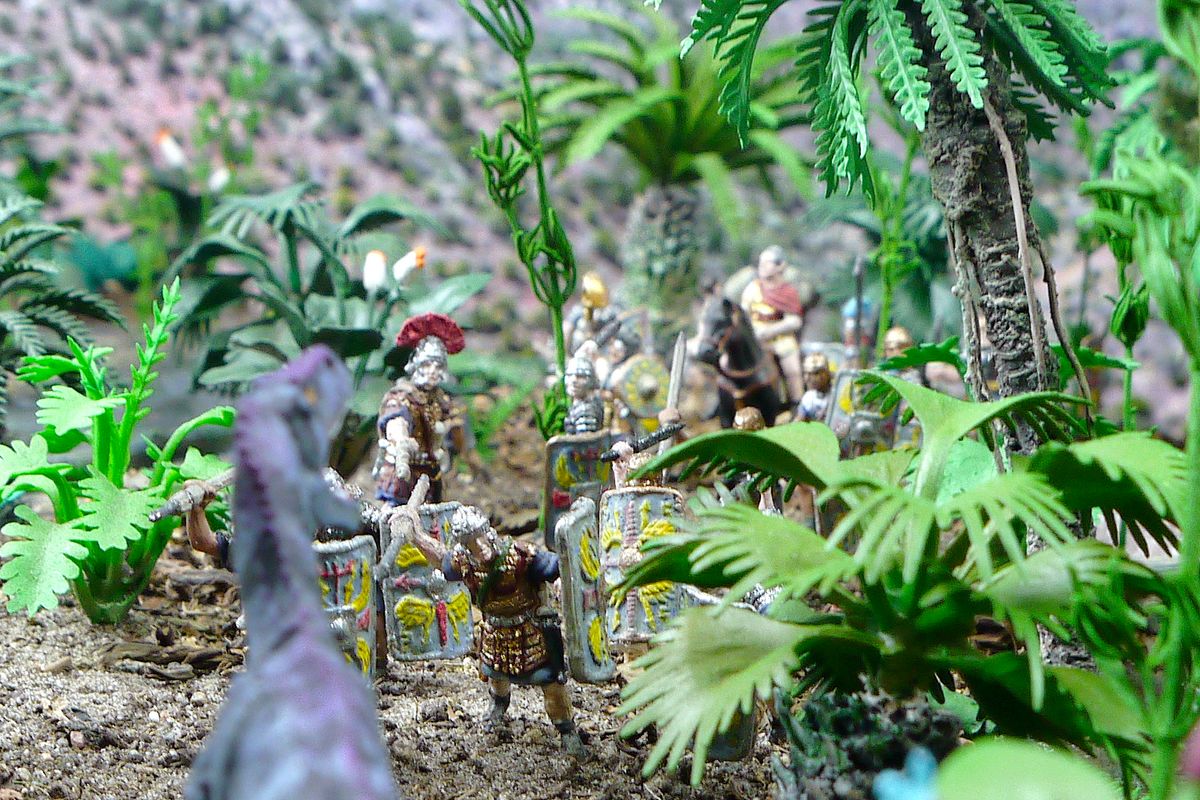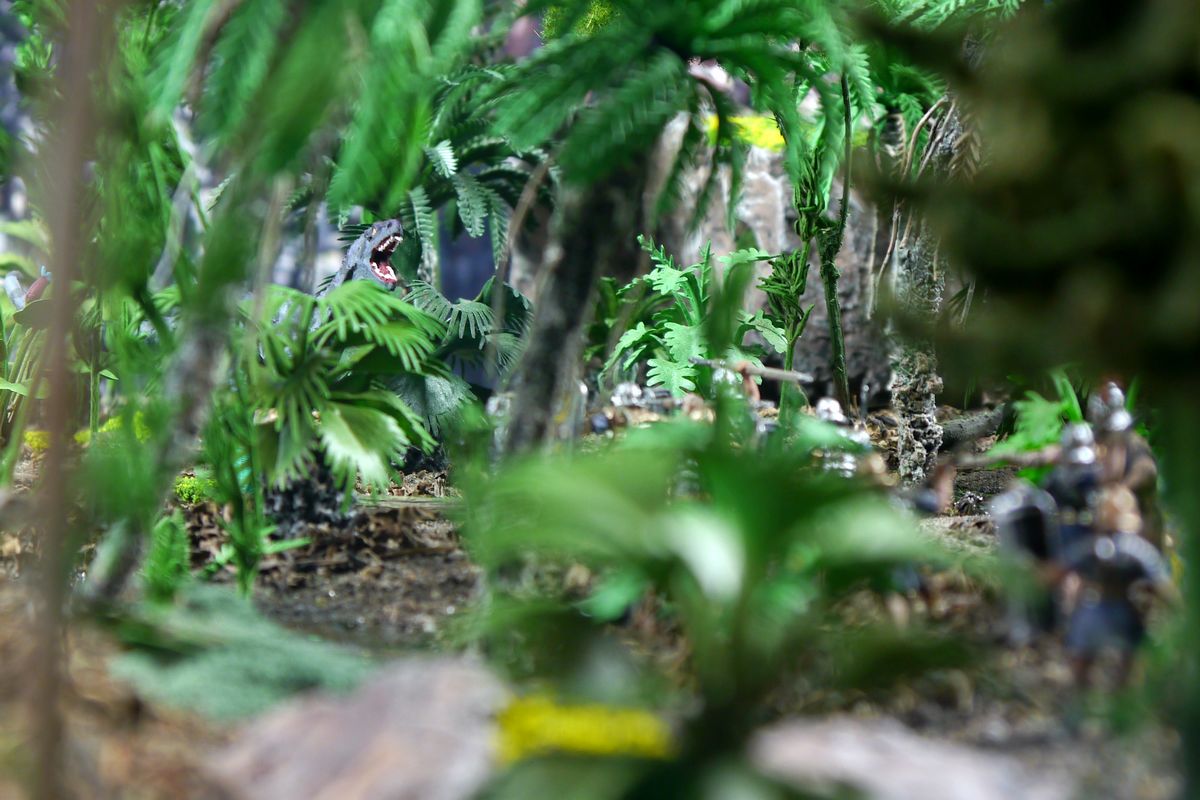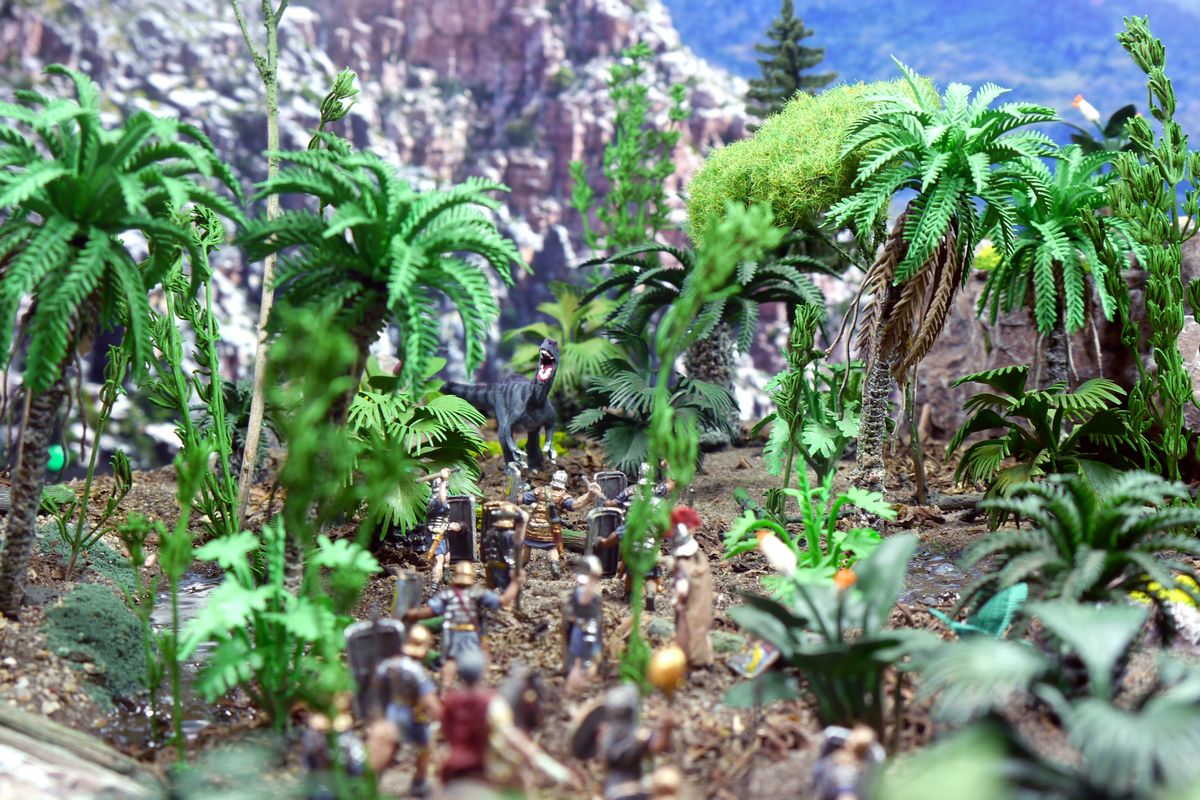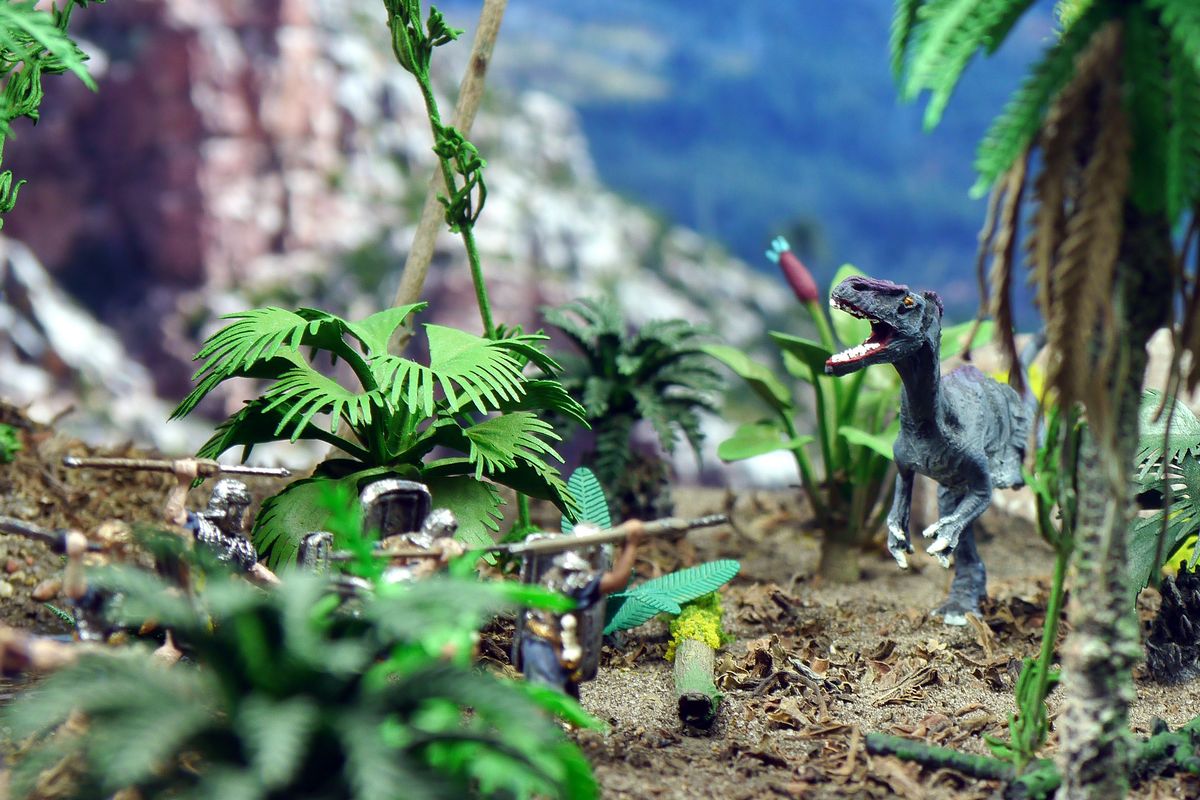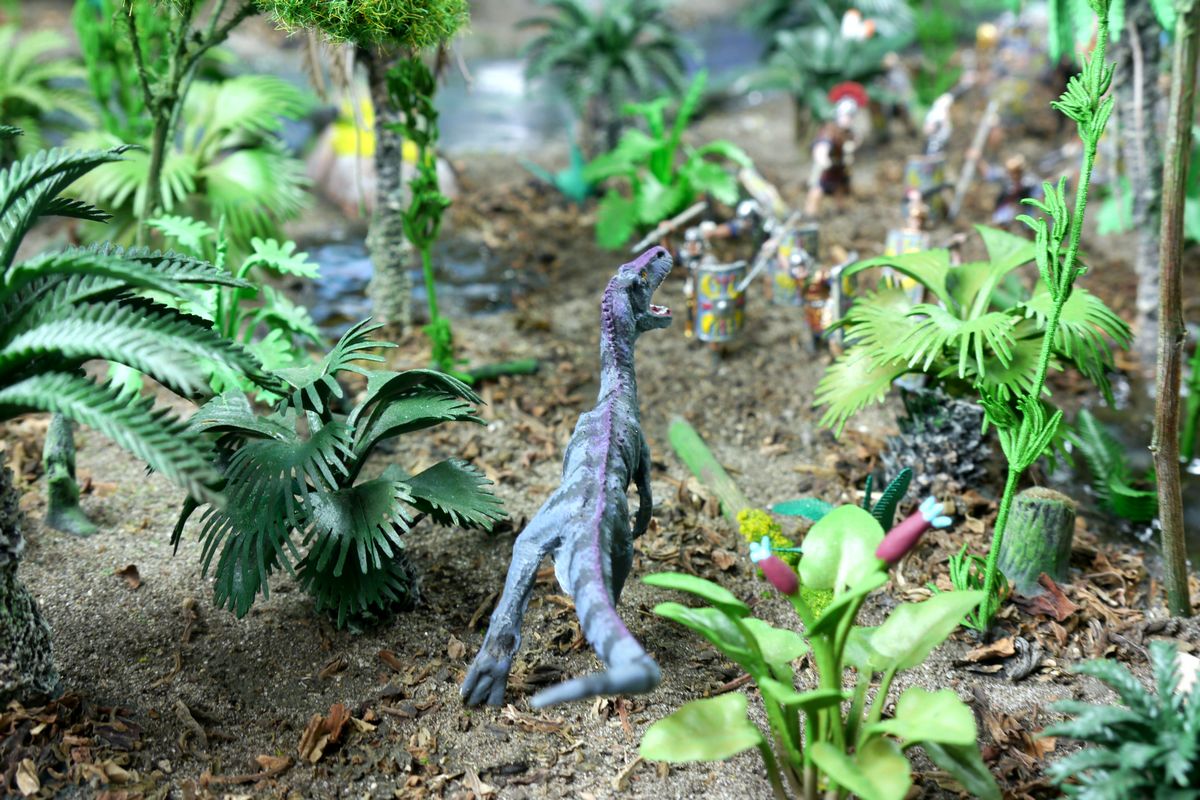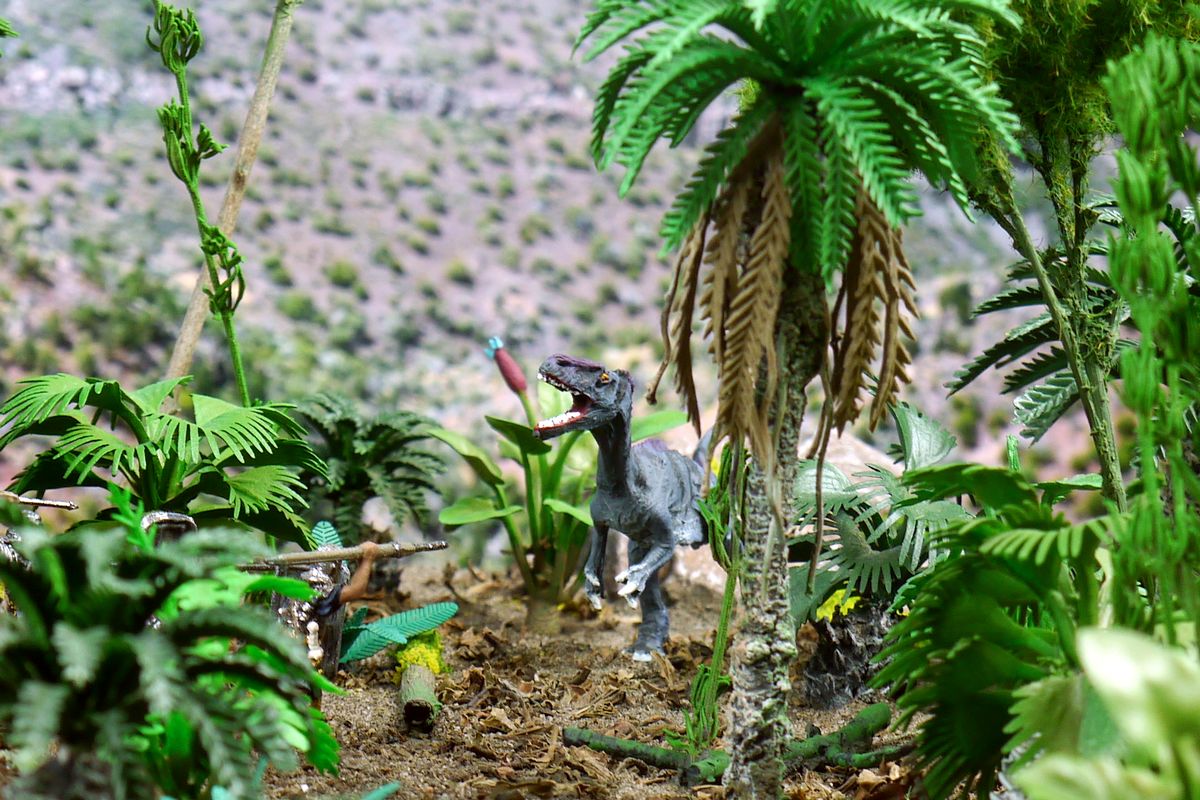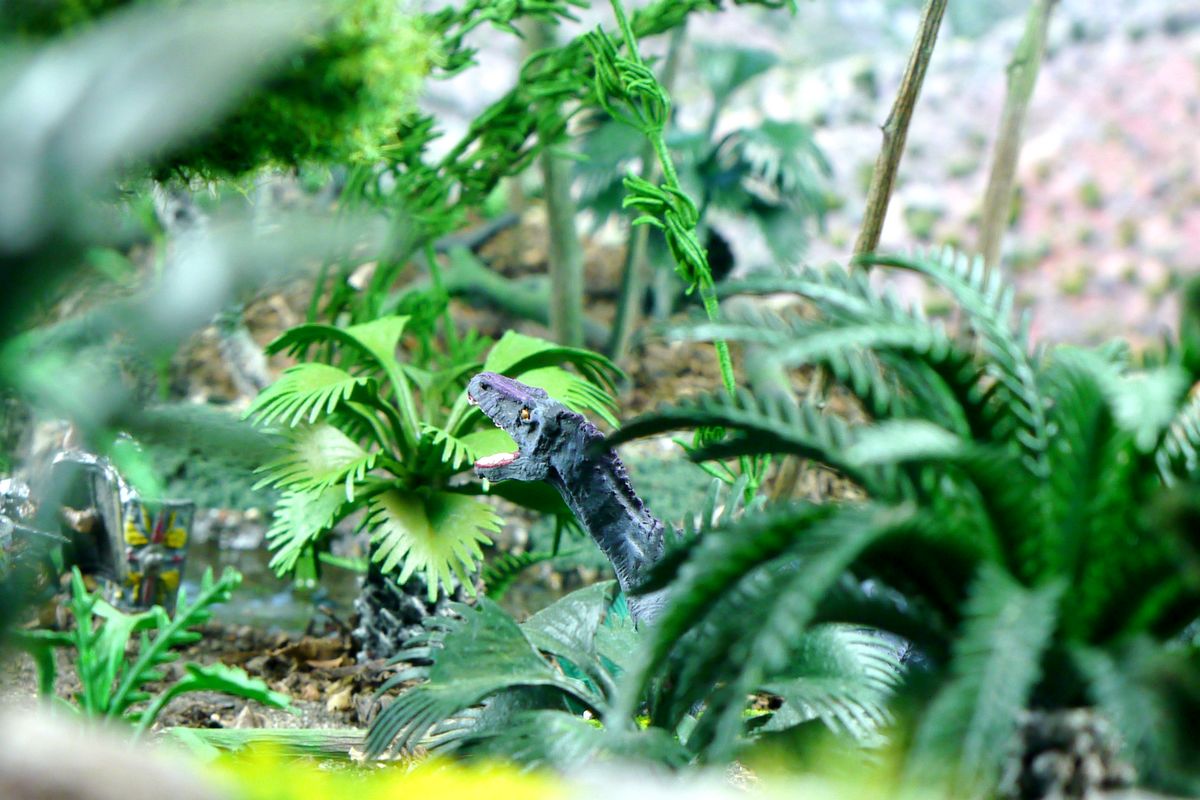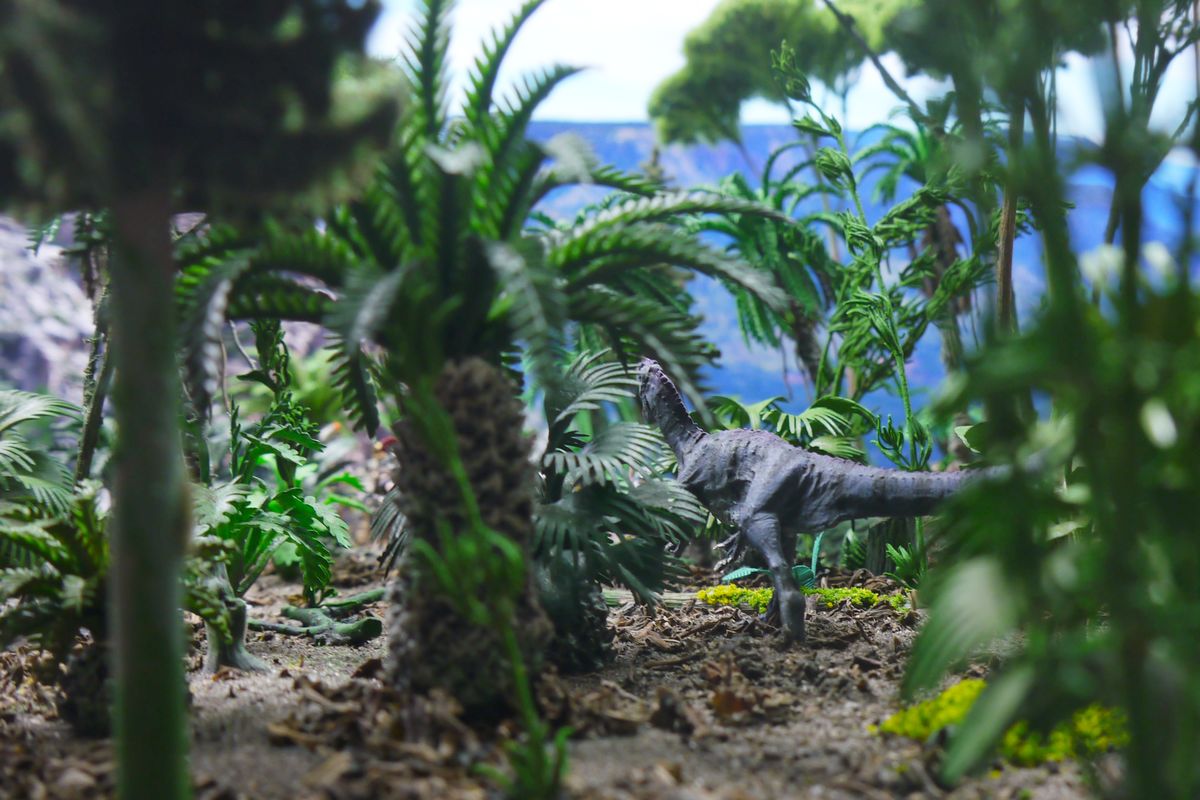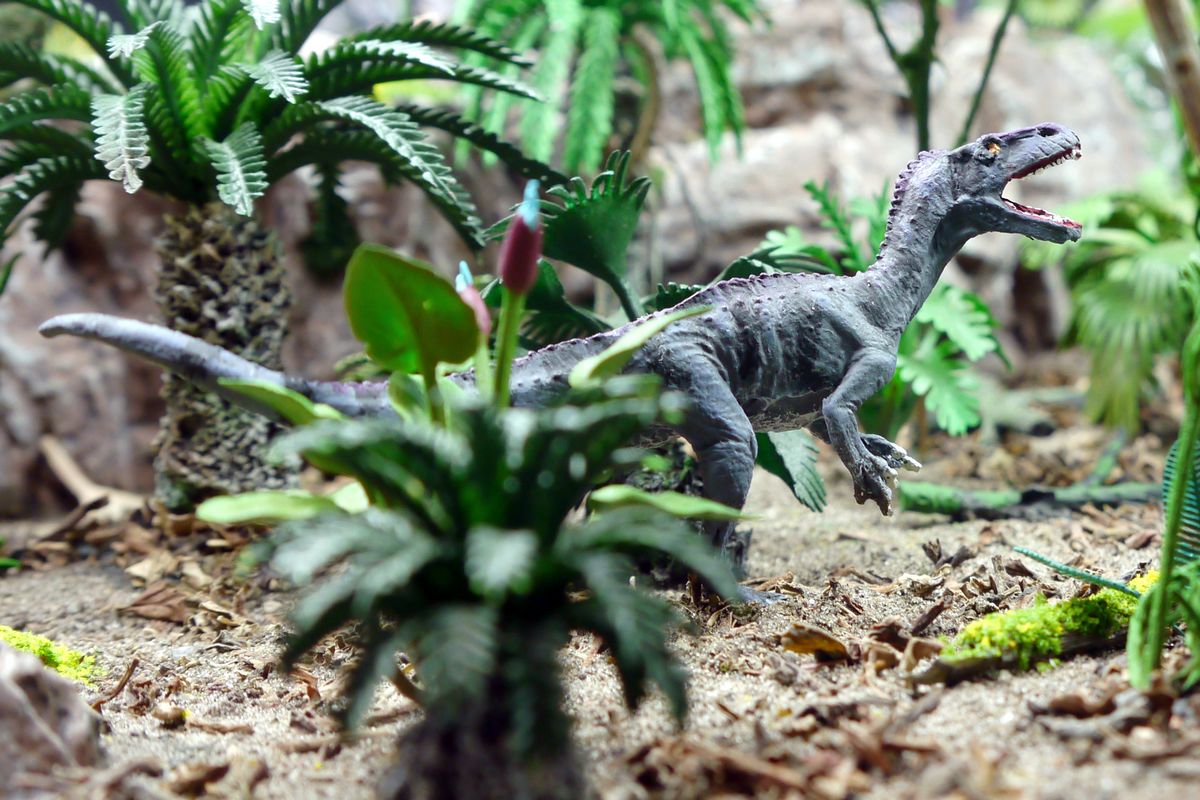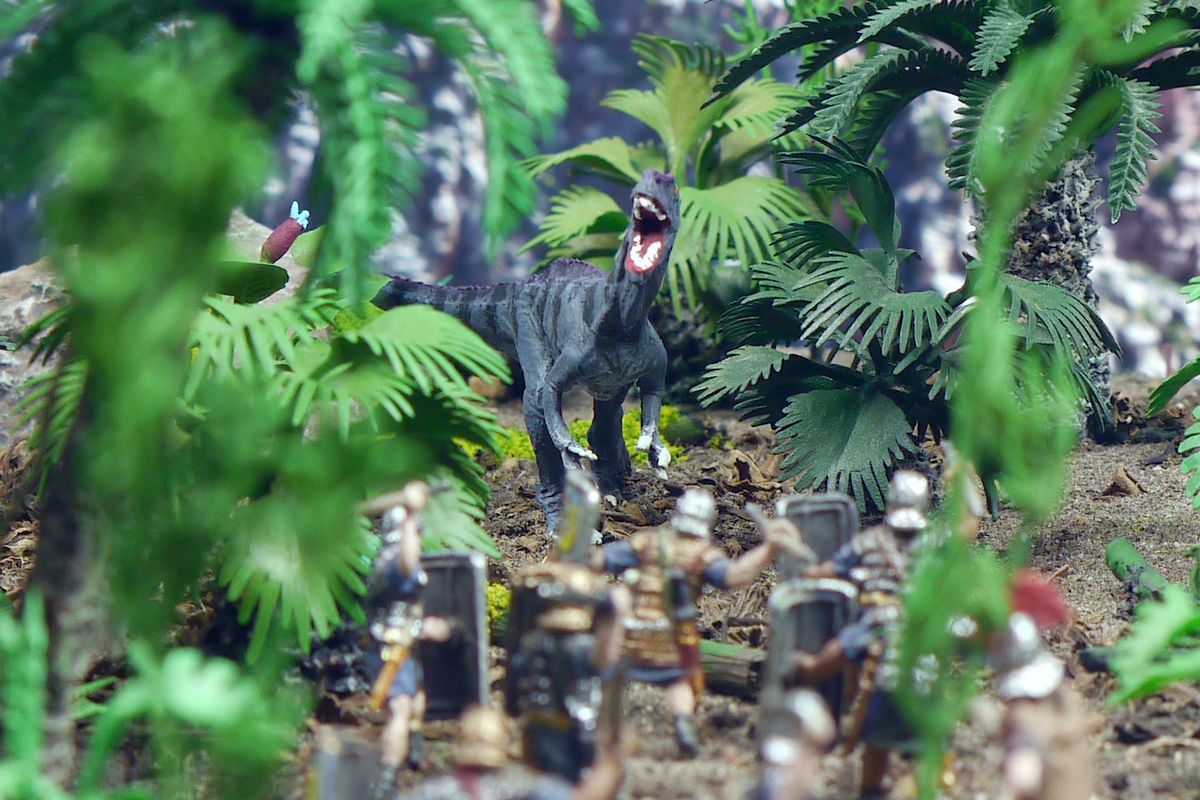We are in the year 100 A.D.
A Roman naval mission, starting from the province of Lusitania, ventures into the Northern Atlantic Ocean.
The expedition force discovers an unknown island which is inhabited by miraculous creatures surpassing even anything reported in the Natural History of Pliny the Elder…
But before the main show begins, let me introduce two particular creatures first. Usually, I don’t give names to the figures in my dioramas; but in this case, I had to make an exception. This guy here is Dundee:
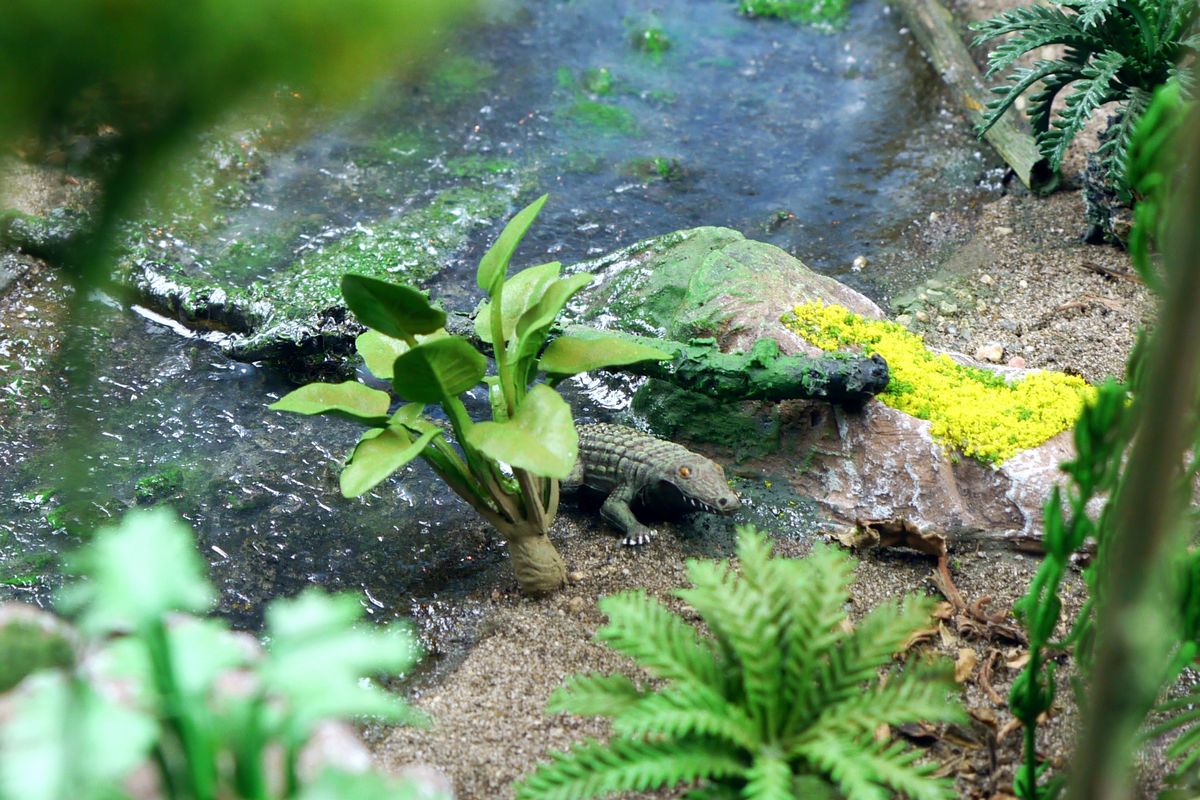
… And here we have his pal called Plissken:
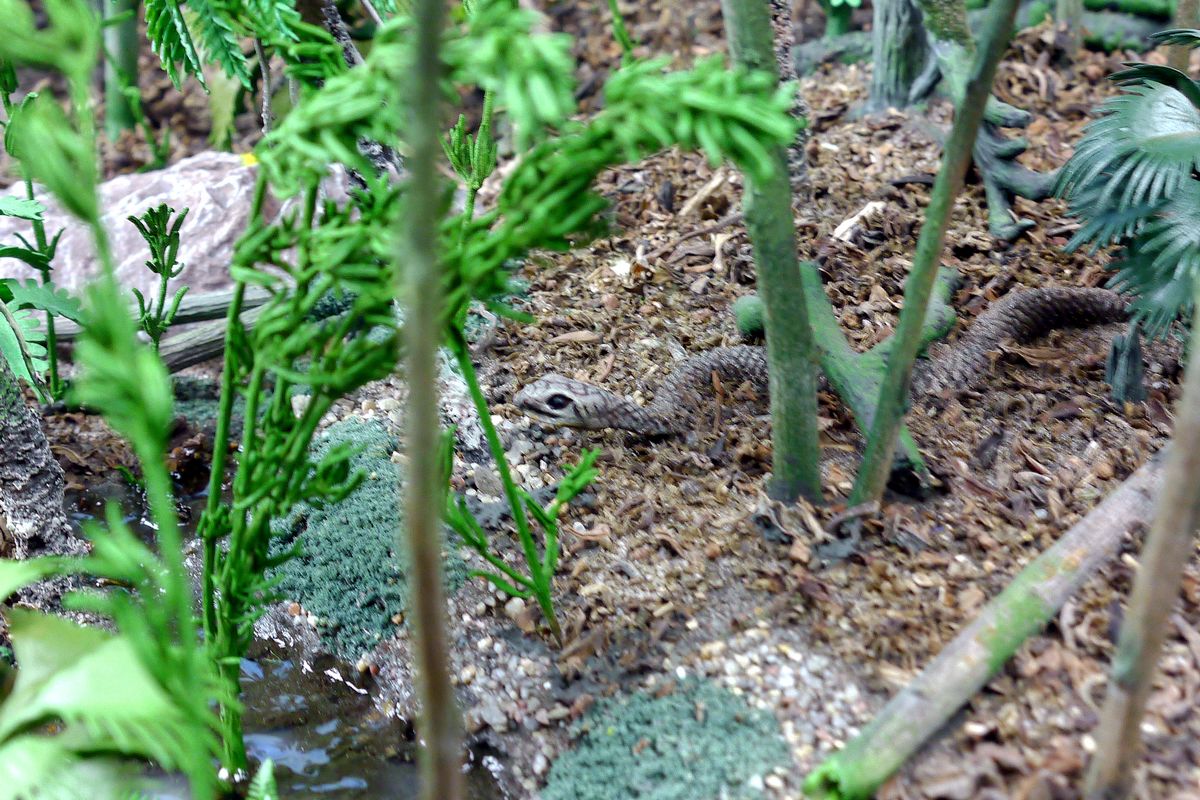
I can exactly date the beginning of this project: Our forum member Mixus Minimax started to present his dinosaurs in September 2014, and on March 24, 2015 I wrote:
sberry wrote:There is quite a number of nice dino models available – but dinosaurs in 1/72, that’s quite another thing. Inspired by your fascinating work here, I have ordered some of these creatures just yesterday.
And voila, merely six years later the diorama is finished. (In geological terms, this is less than the blink of an eye!)
In the following days I will present a number pictures, together with some information on the models etc.

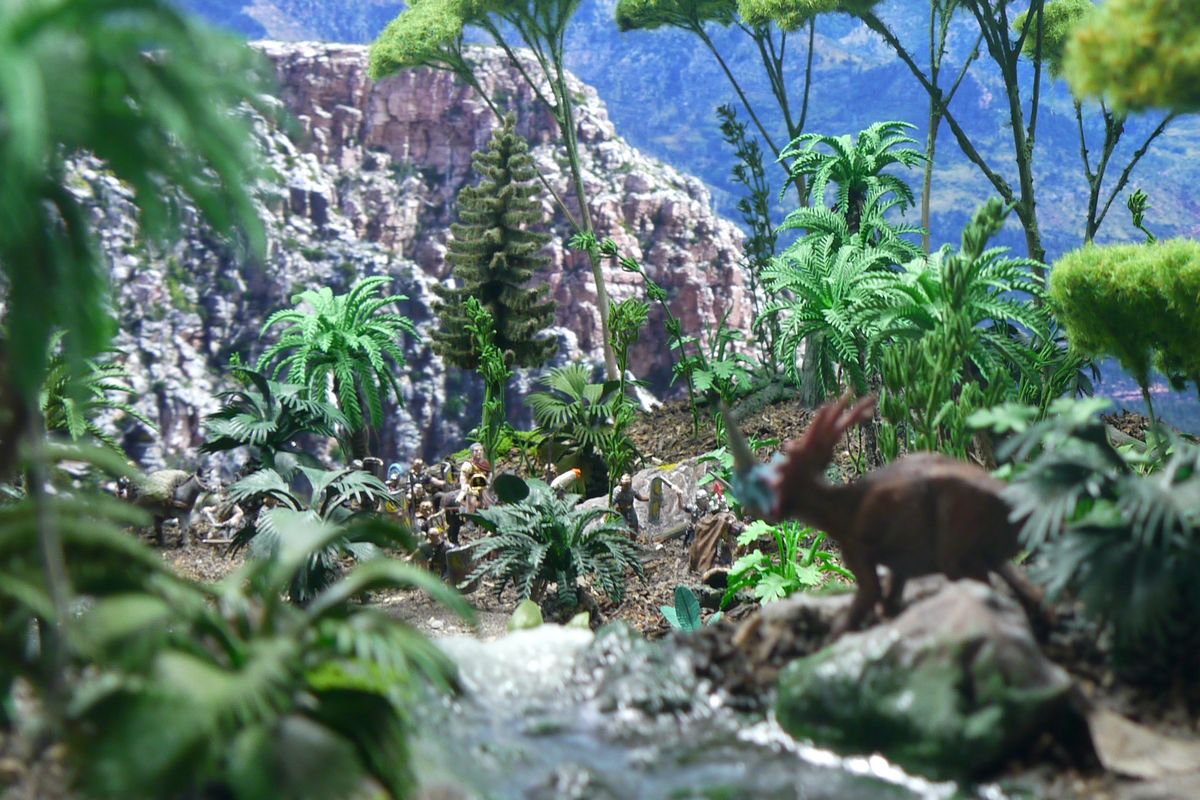
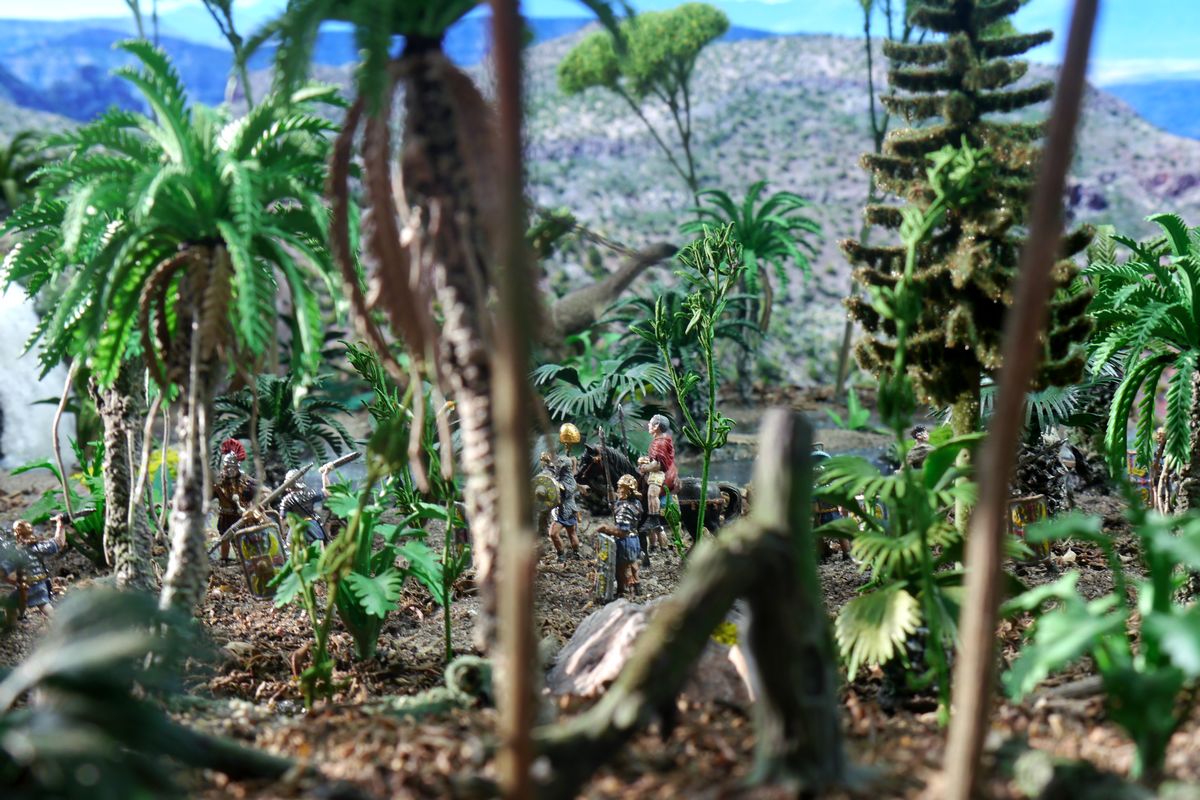
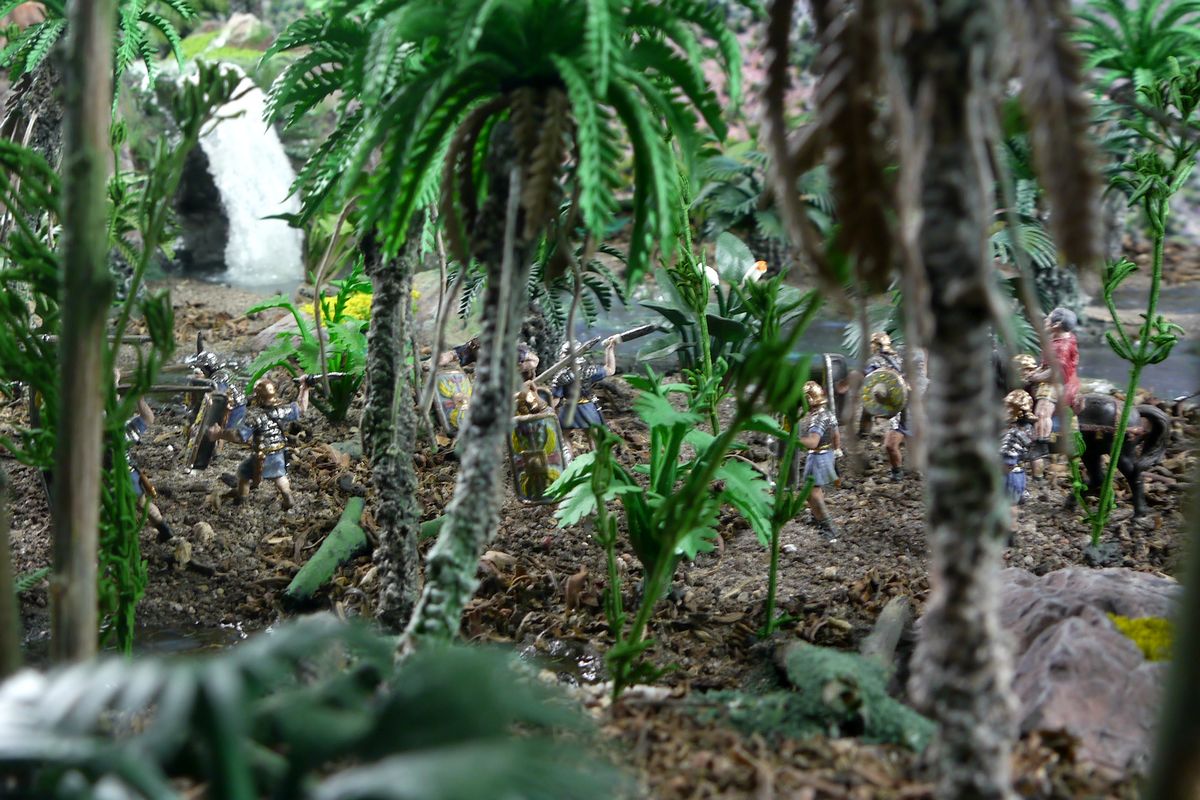
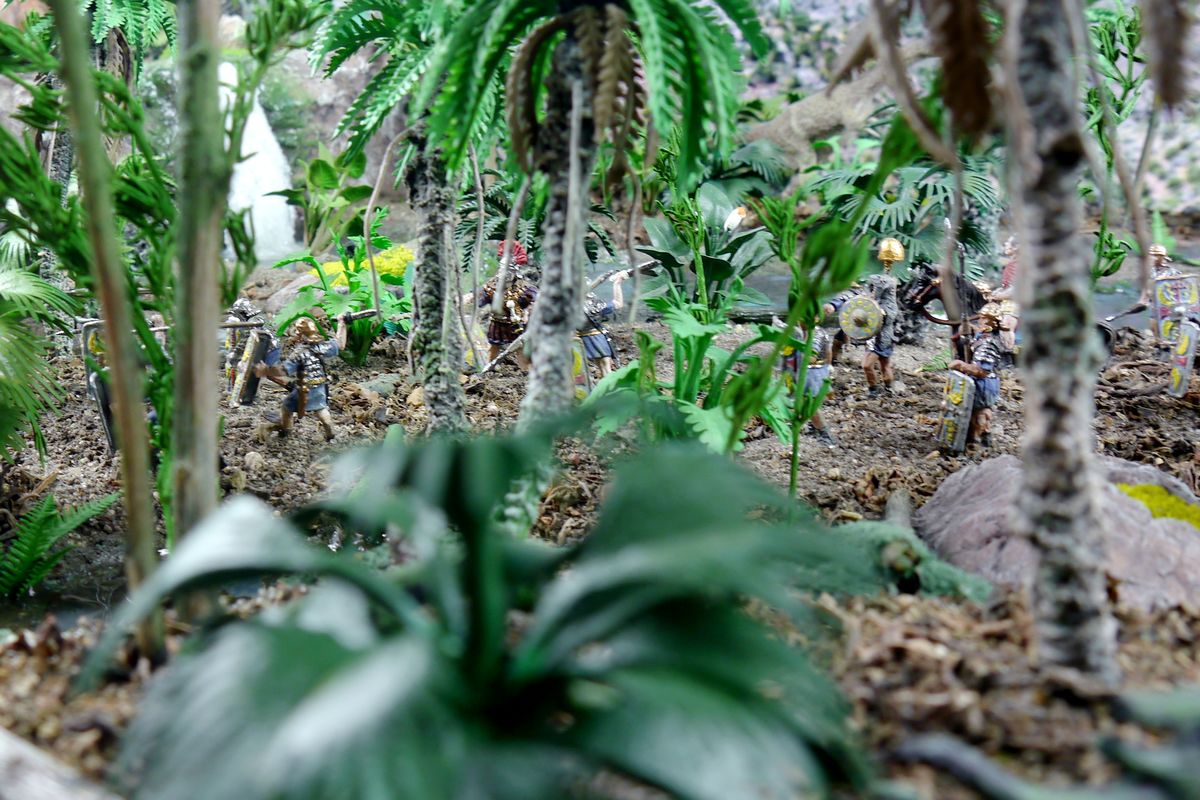
All right, let’s start our little lecture on palaeobiology. But it’s OK if you skip the text and look only at the pictures!
I. The Island
The basic idea is that the Romans discover an island where plants and animals have survived the end of the Cretaceous period (145 – 66 million years ago). Such a survival is impossible, and yet I had the ambition to present this impossible scenario in a “convincing” way (whatever that means).
The Cretaceous is the youngest period of the Mesozoic era (251 – 66 million years ago), and the main challenge of this project was to recreate a more or less plausible Mesozoic landscape. I wanted vegetation that looks sufficiently “primordial”, but not exactly like a modern jungle.
Our “jungles” are tropical rainforests which are no good templates at all for understanding Mesozoic vegetation. Temperate rainforests, growing for instance on the North American Pacific coast or on New Zealand, are somewhat more similar, but there still are differences. One of them is that, in contrast to modern rainforests, Mesozoic forest structure was more open than today and there was no closed canopy.
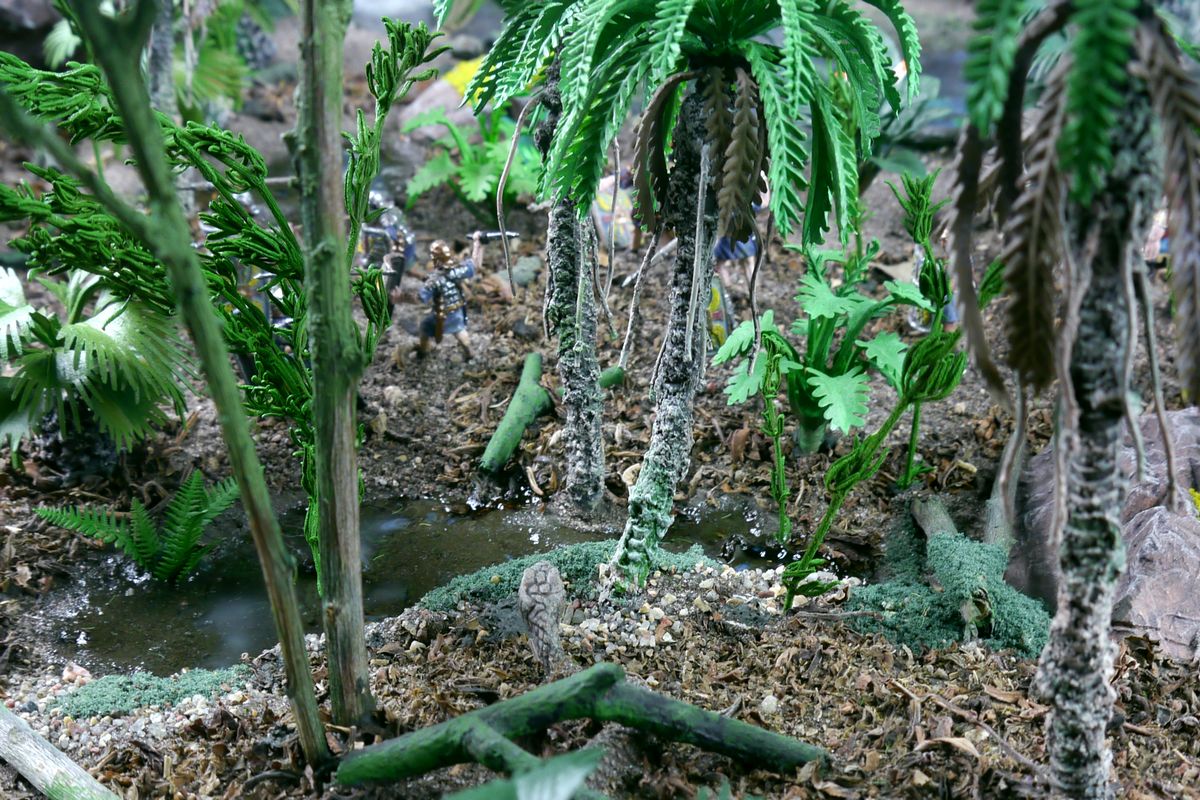
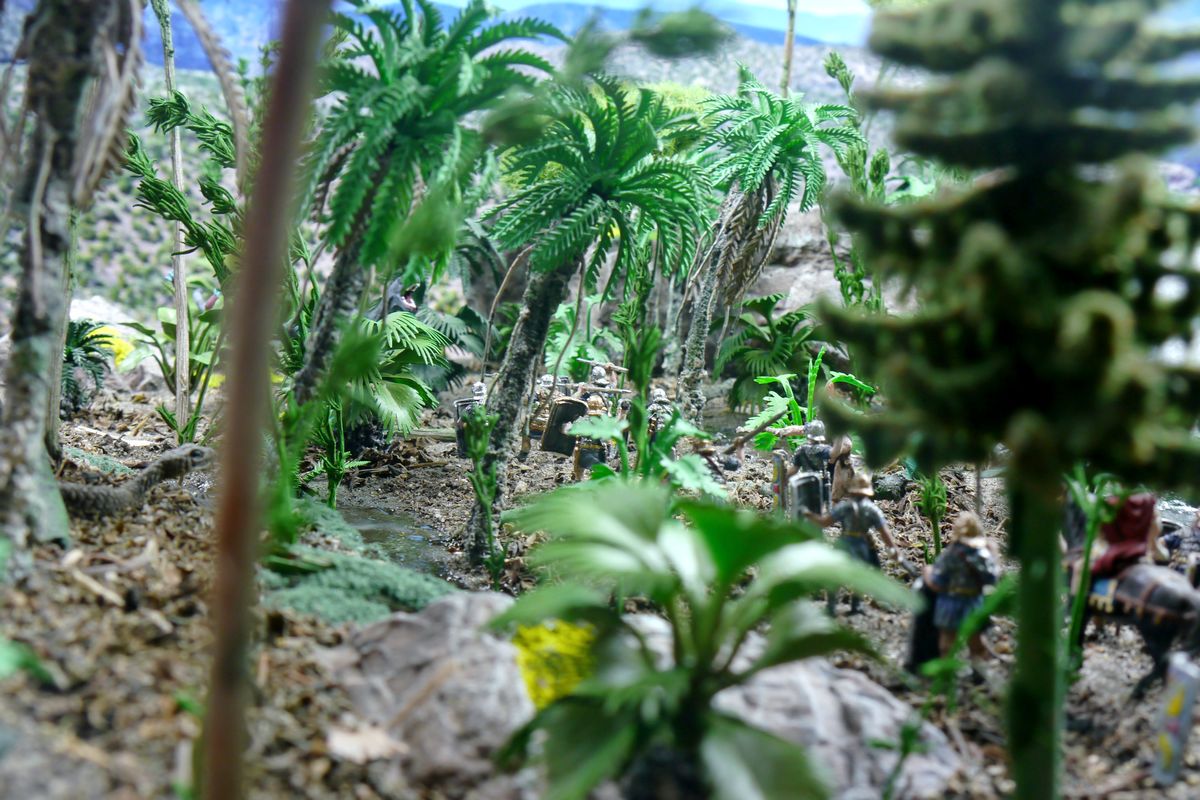
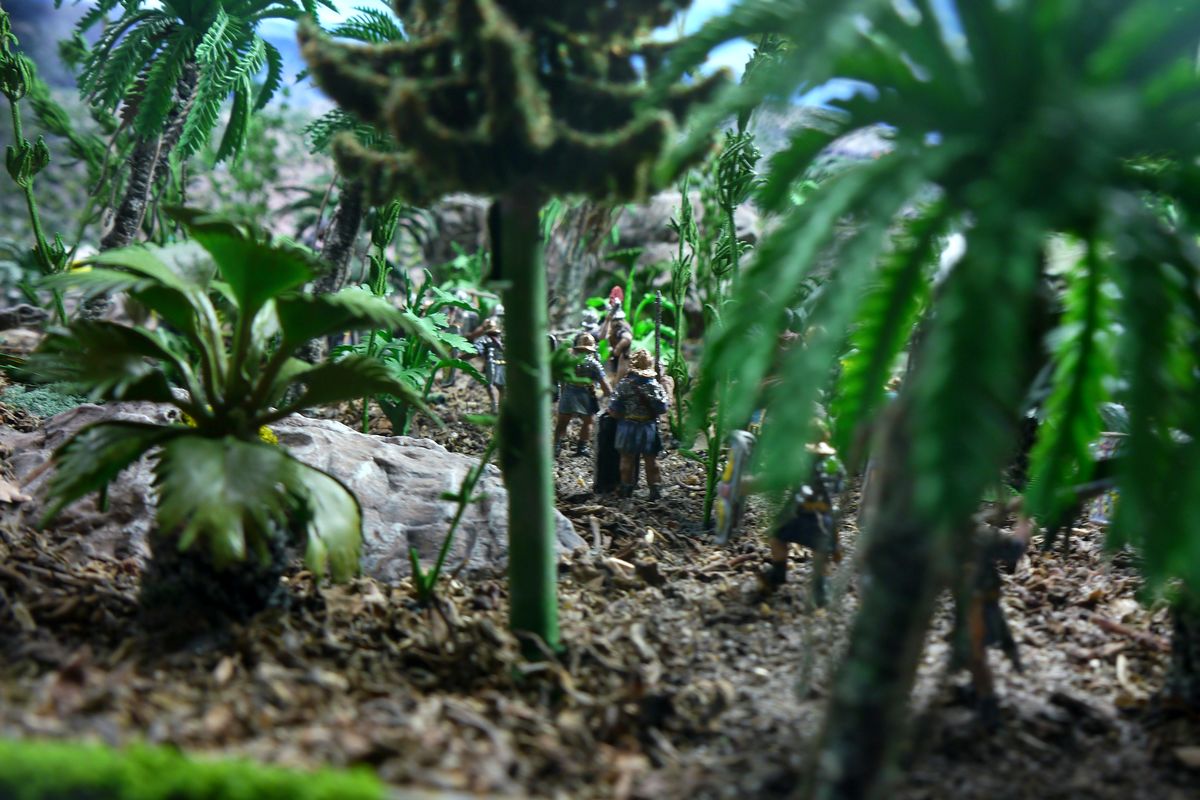
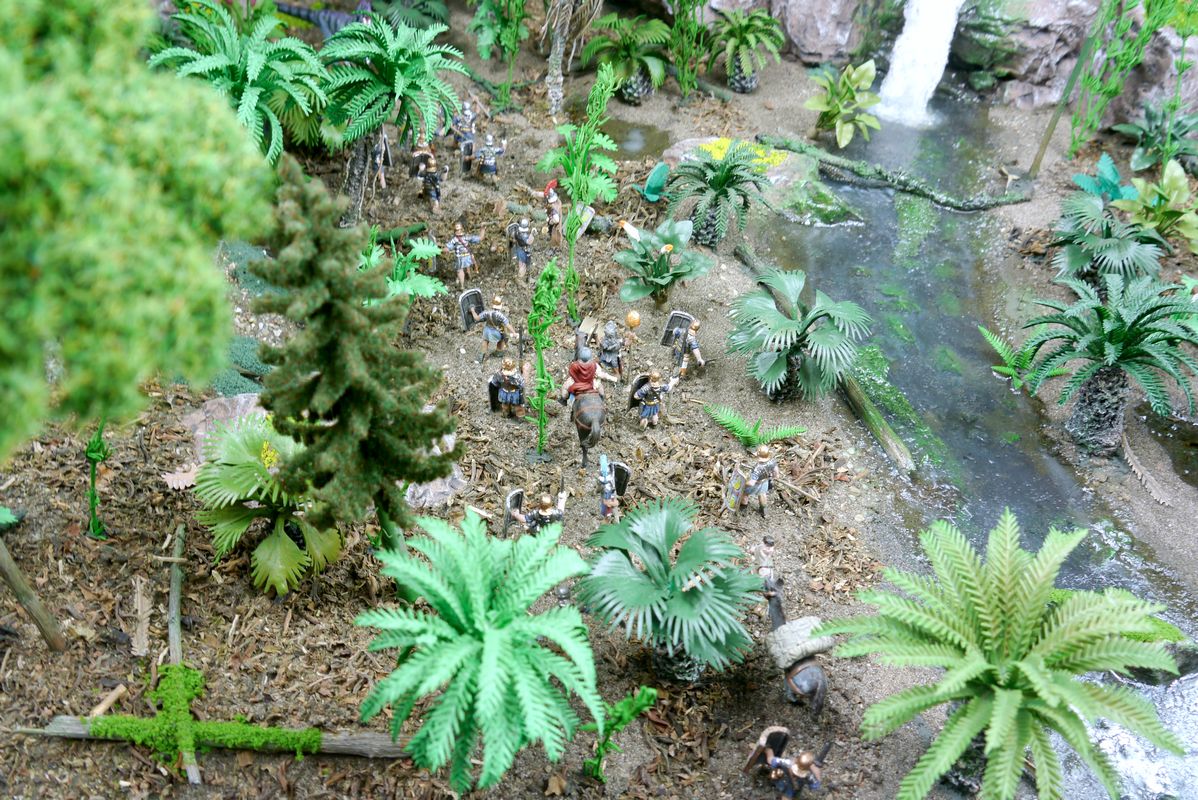
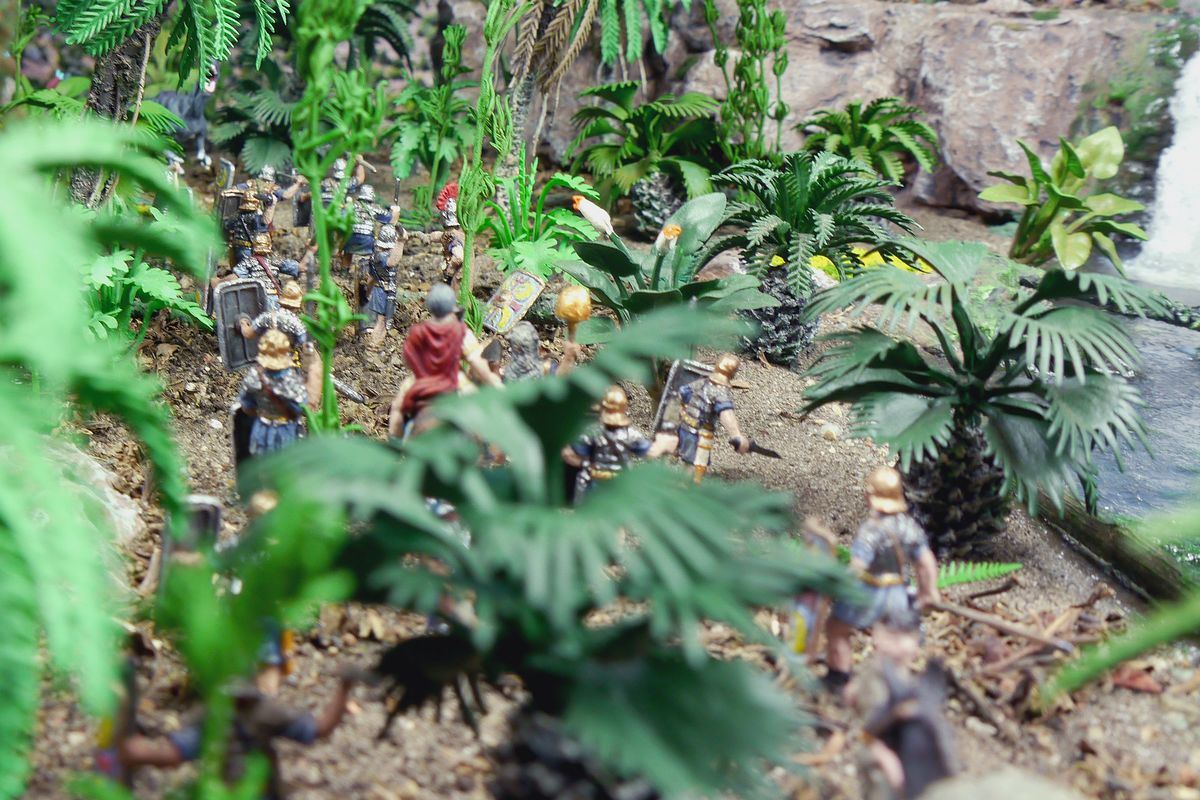
The background photos that I used are Mogollon Rim Panorama (36683571563) © Coconino National Forest / Public Domain and Panorama of Blodgett Basin, West Clear Creek Wilderness area (5988201412) © Brady Smith; Coconino National Forest / CC BY-SA 2.0.







 Moderator
Moderator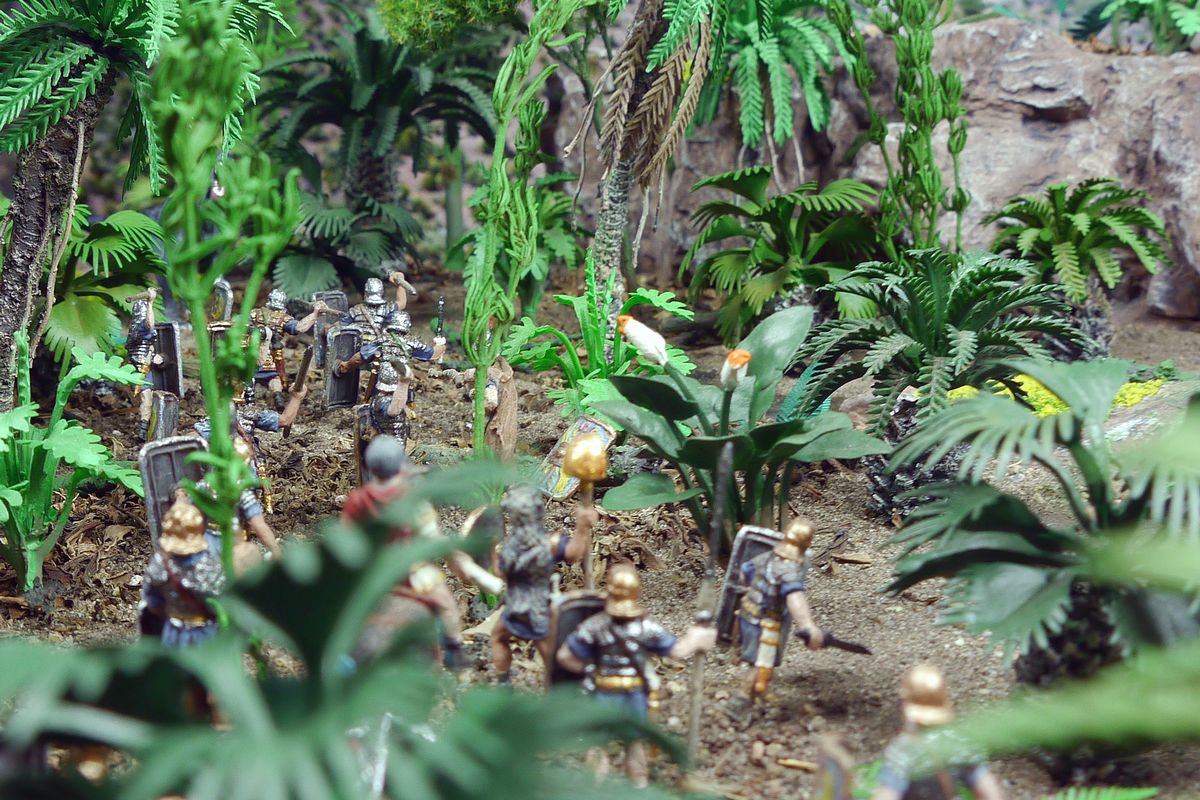
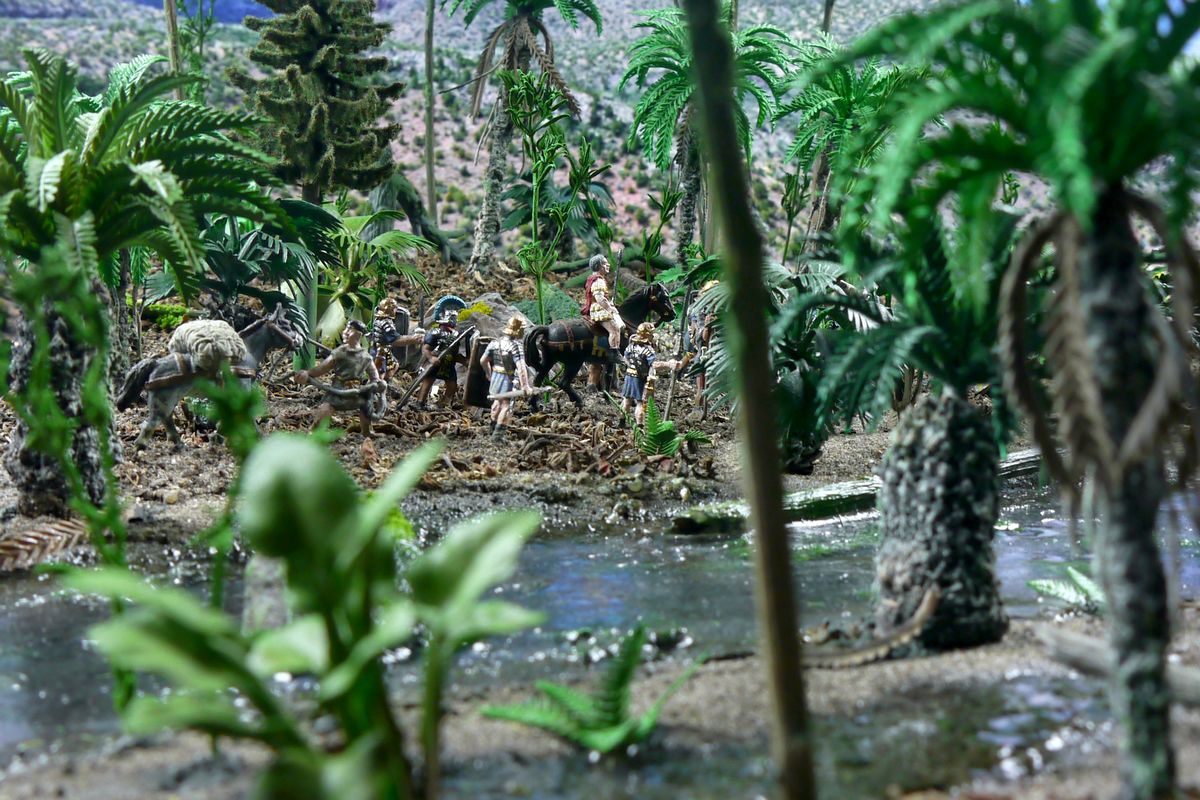
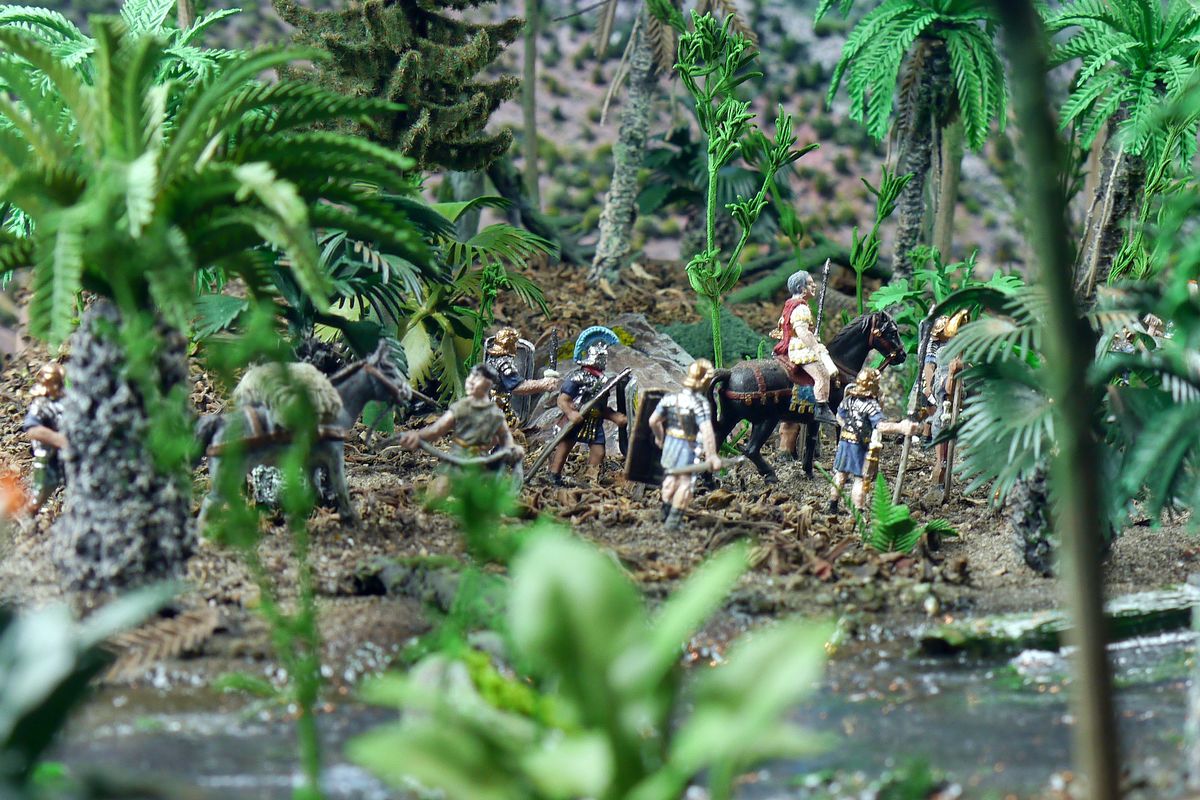
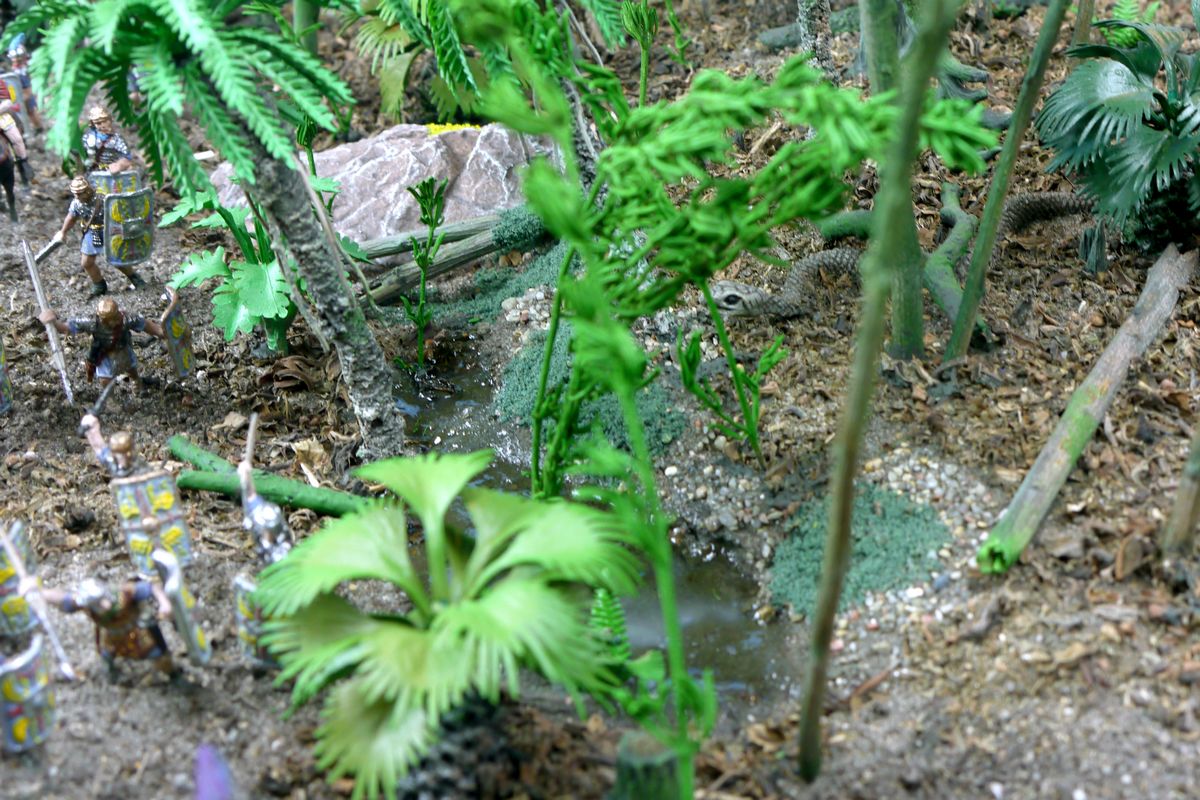
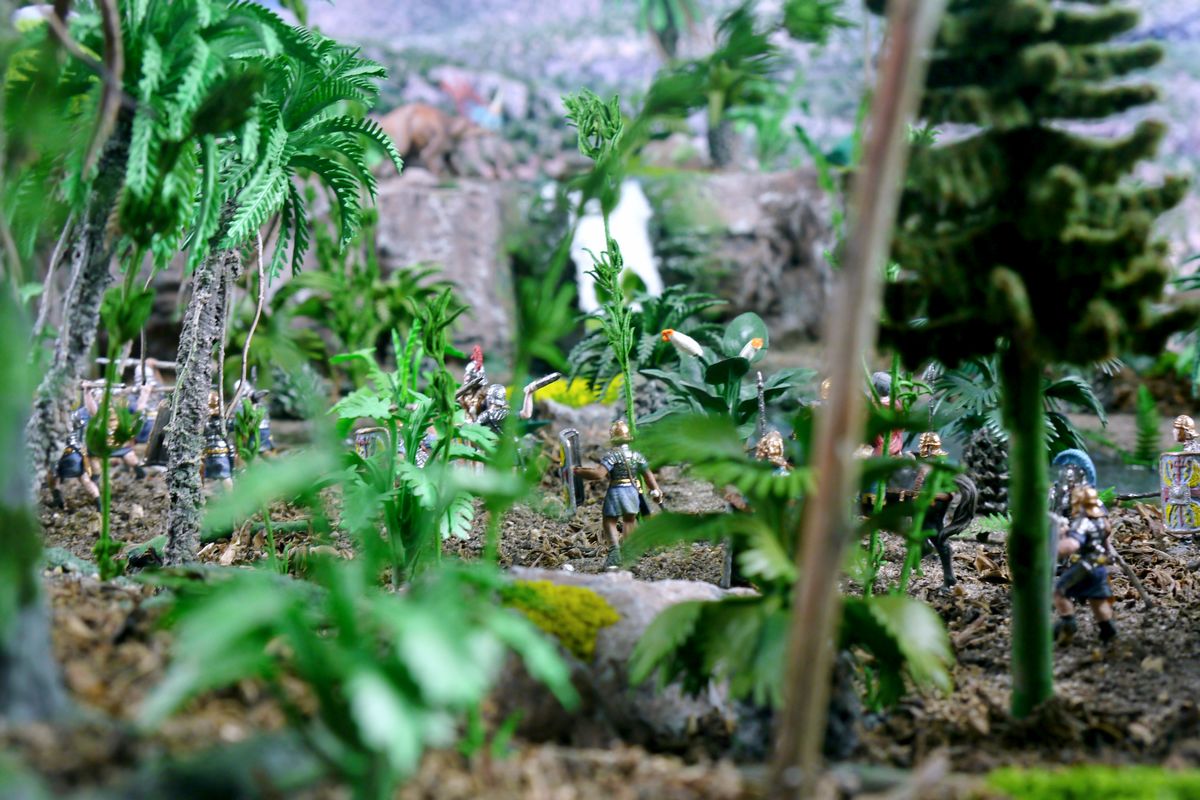
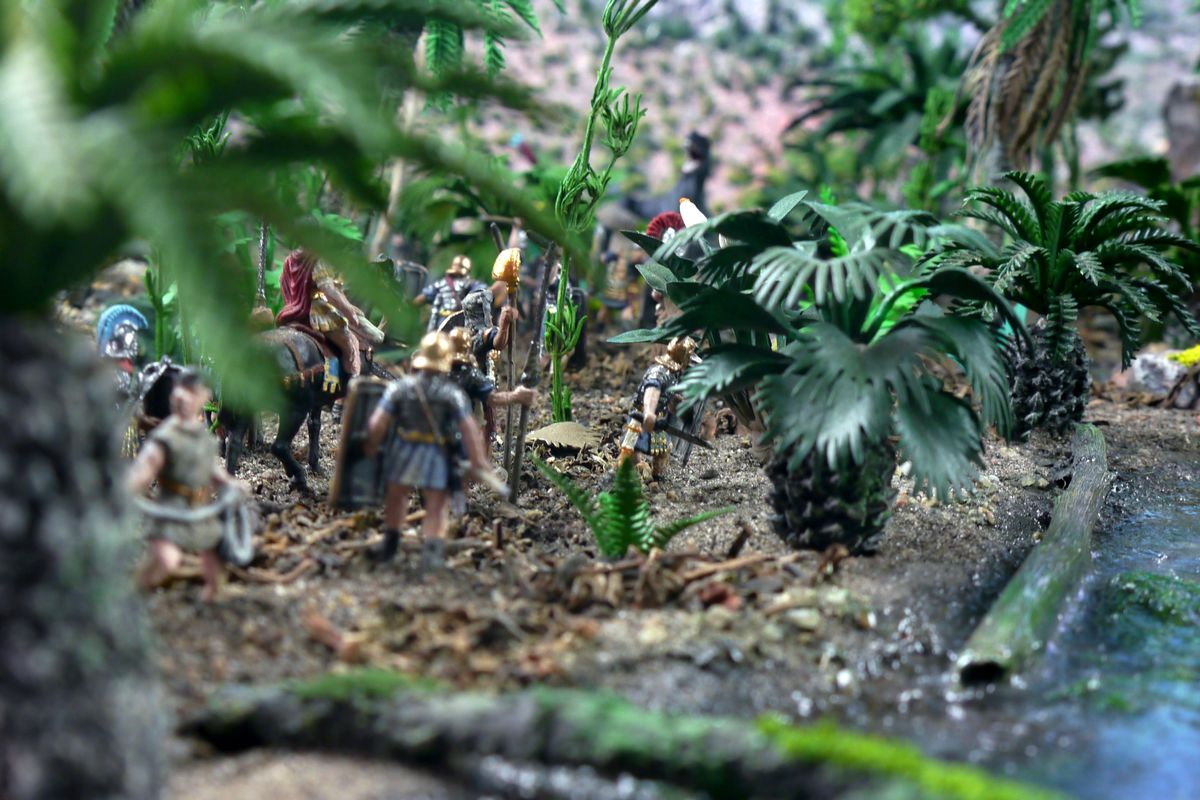
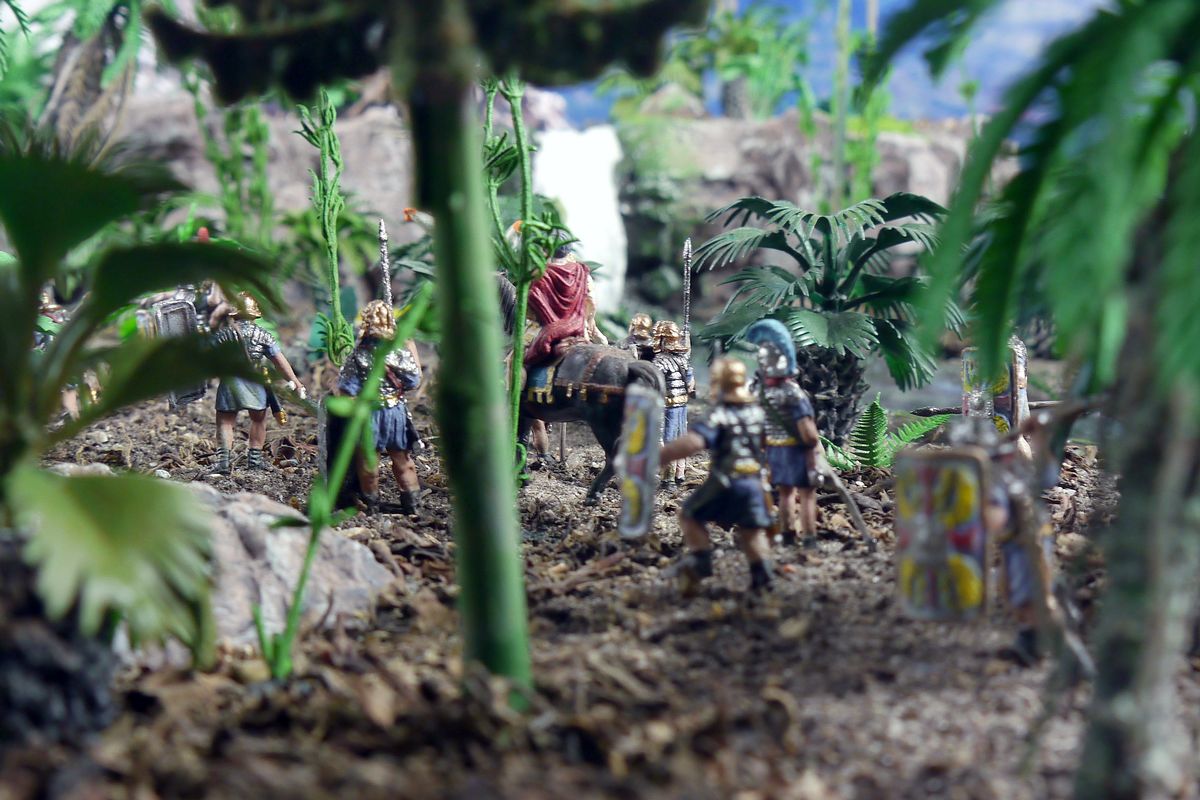
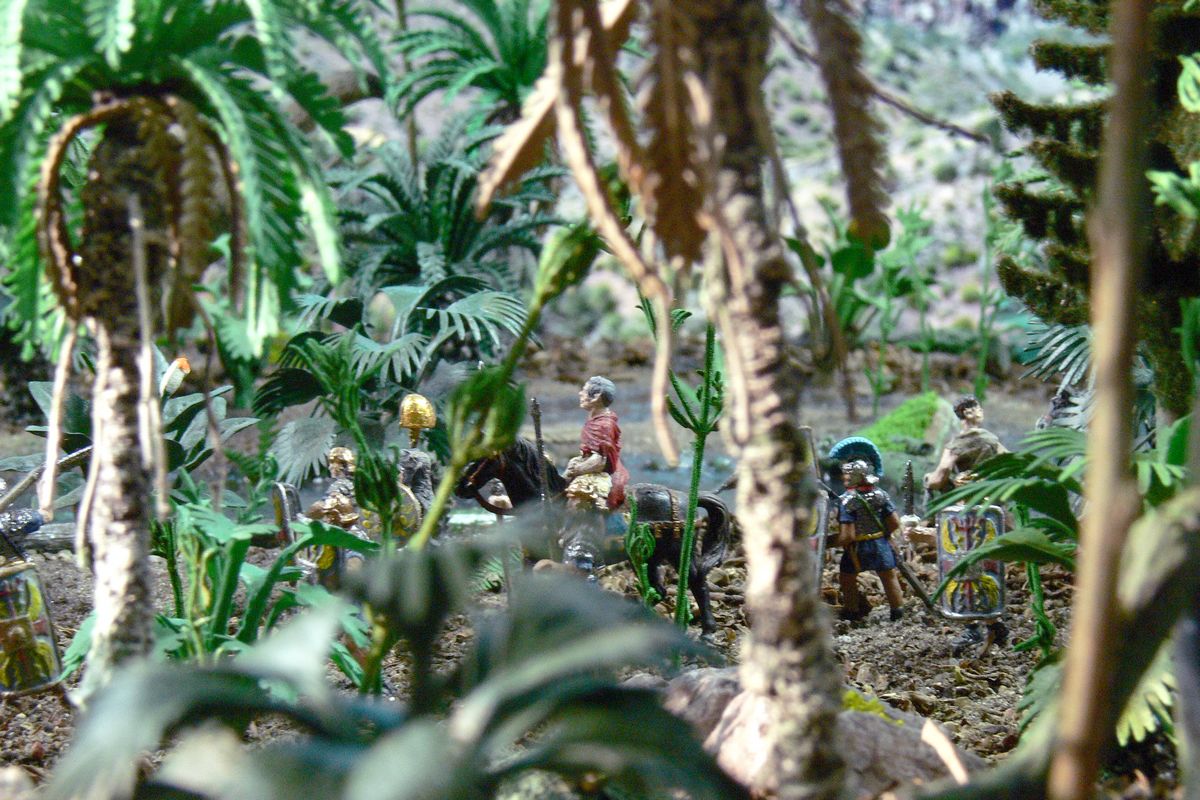
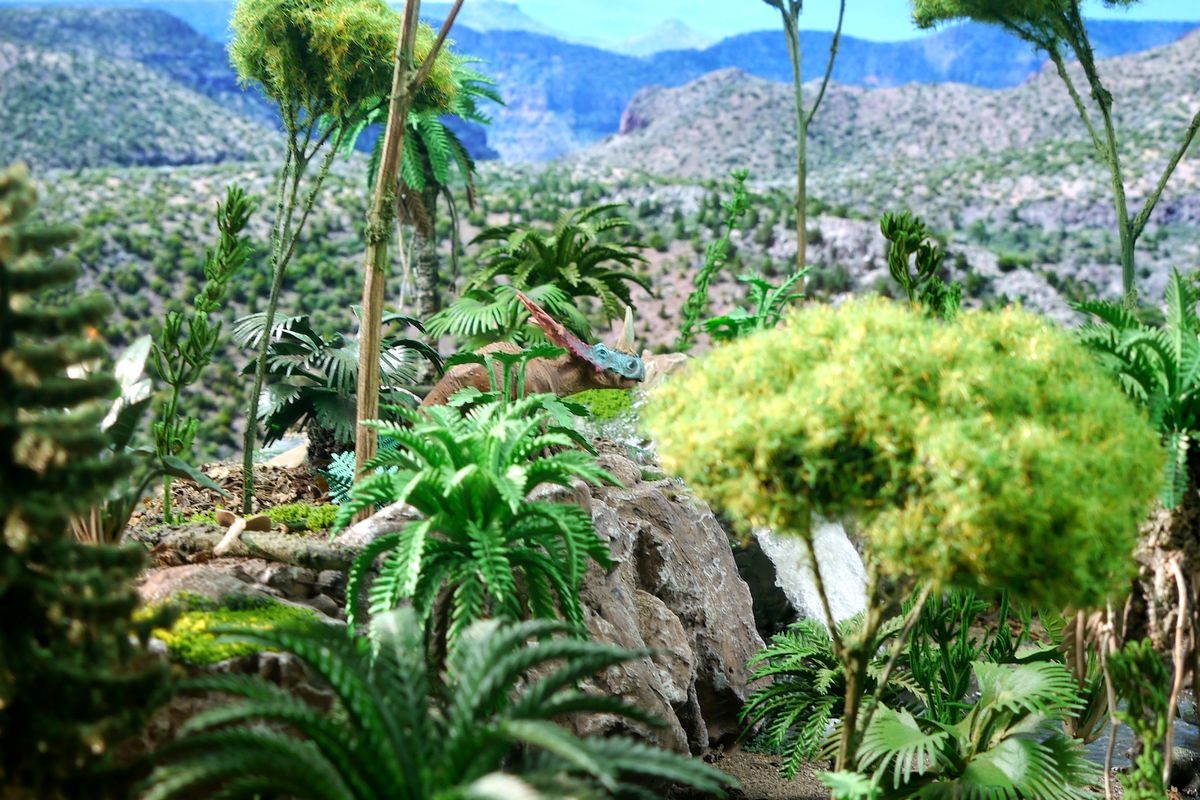
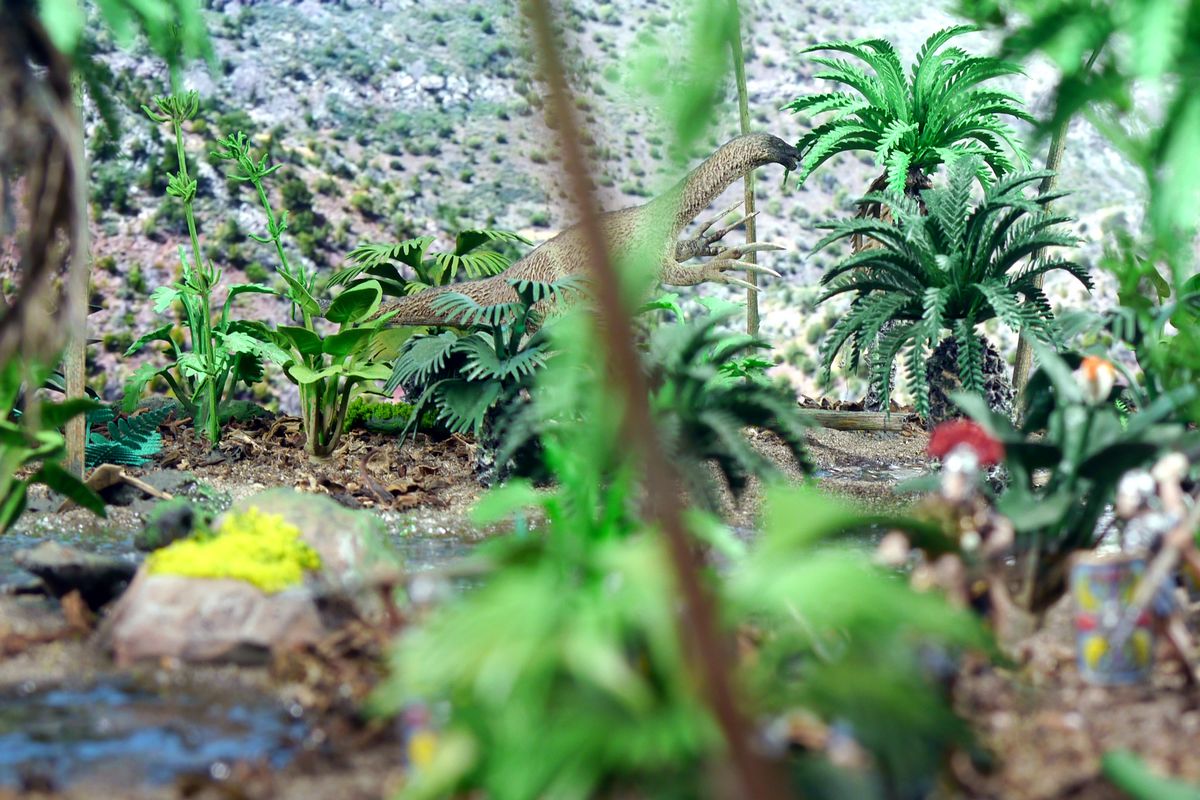
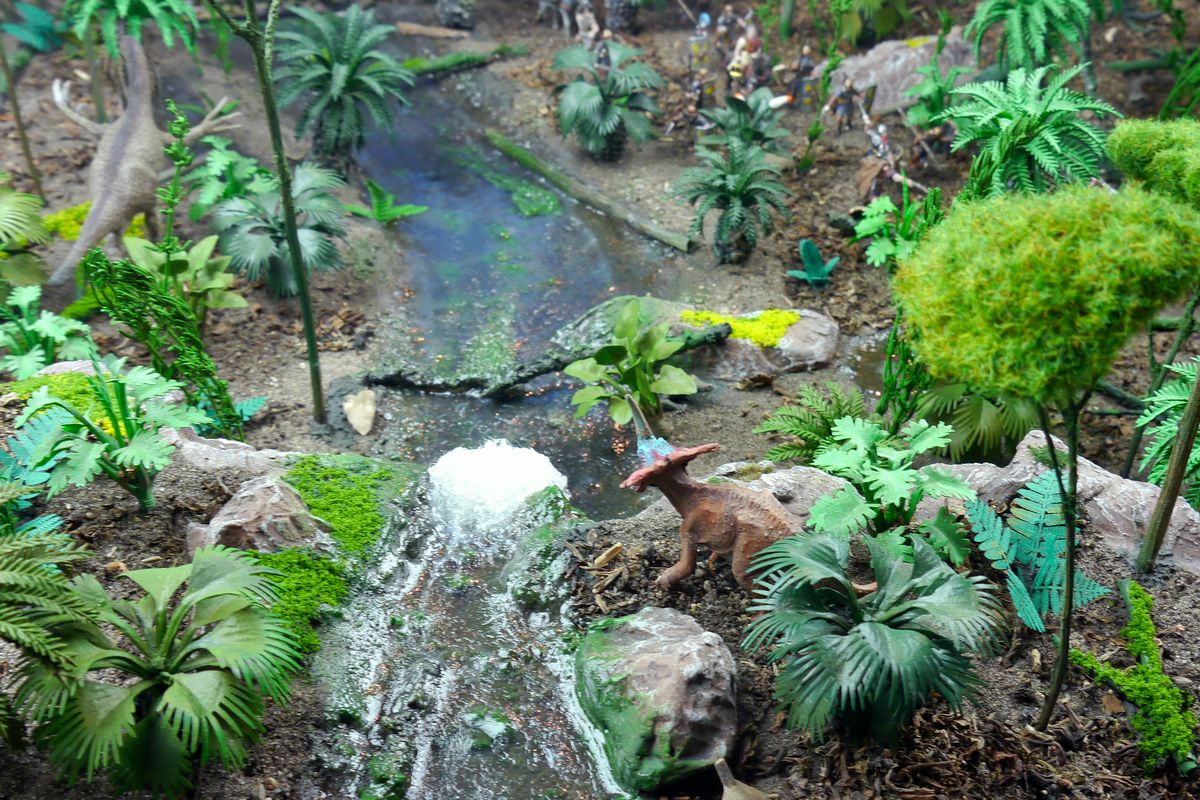
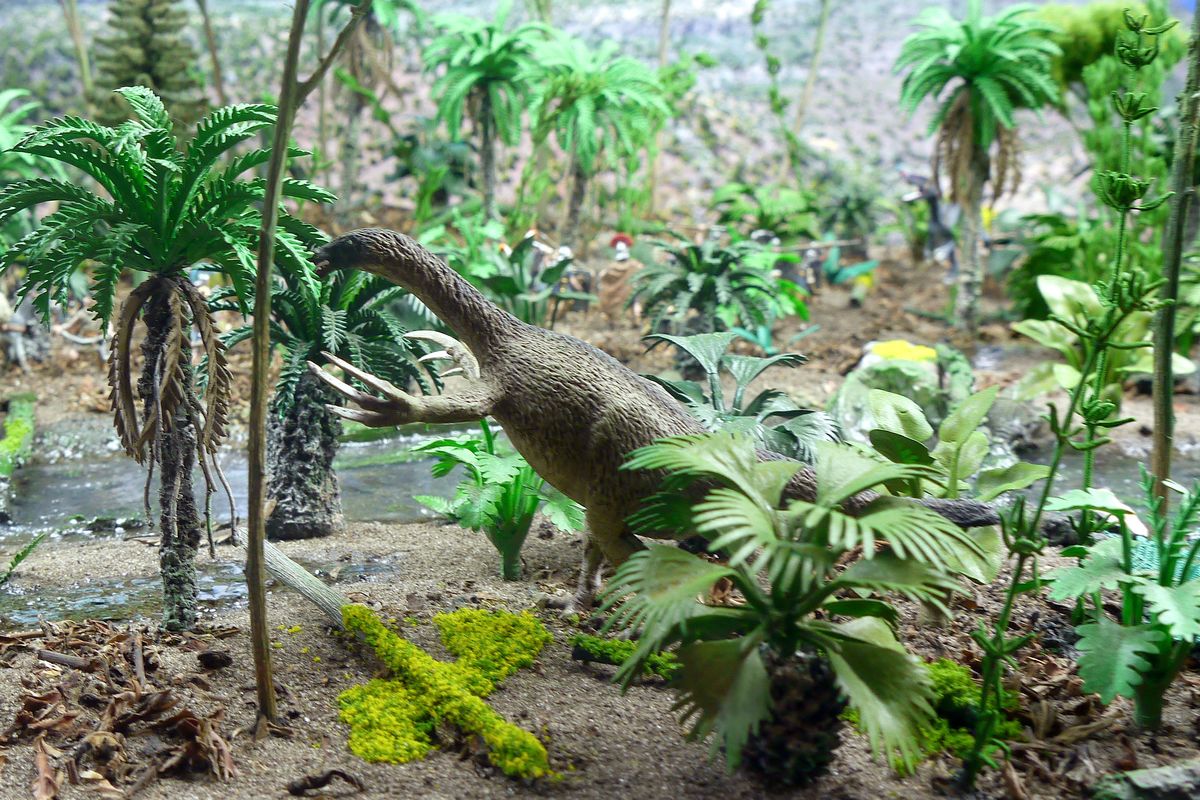




 Supporting Member (Bronze)
Supporting Member (Bronze)